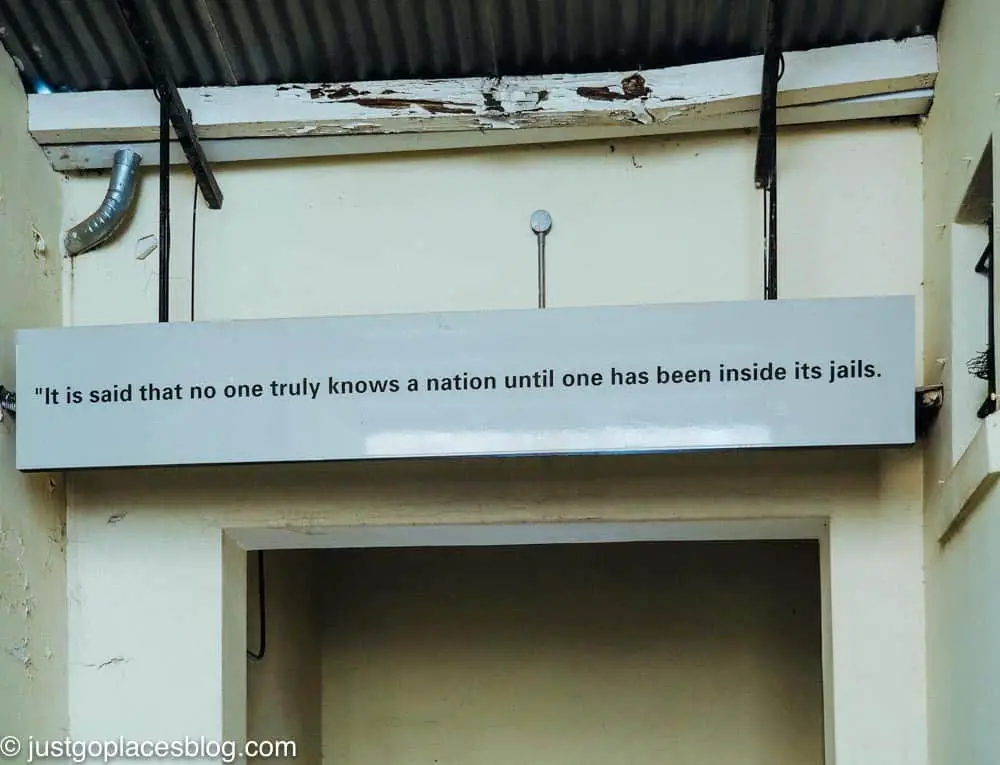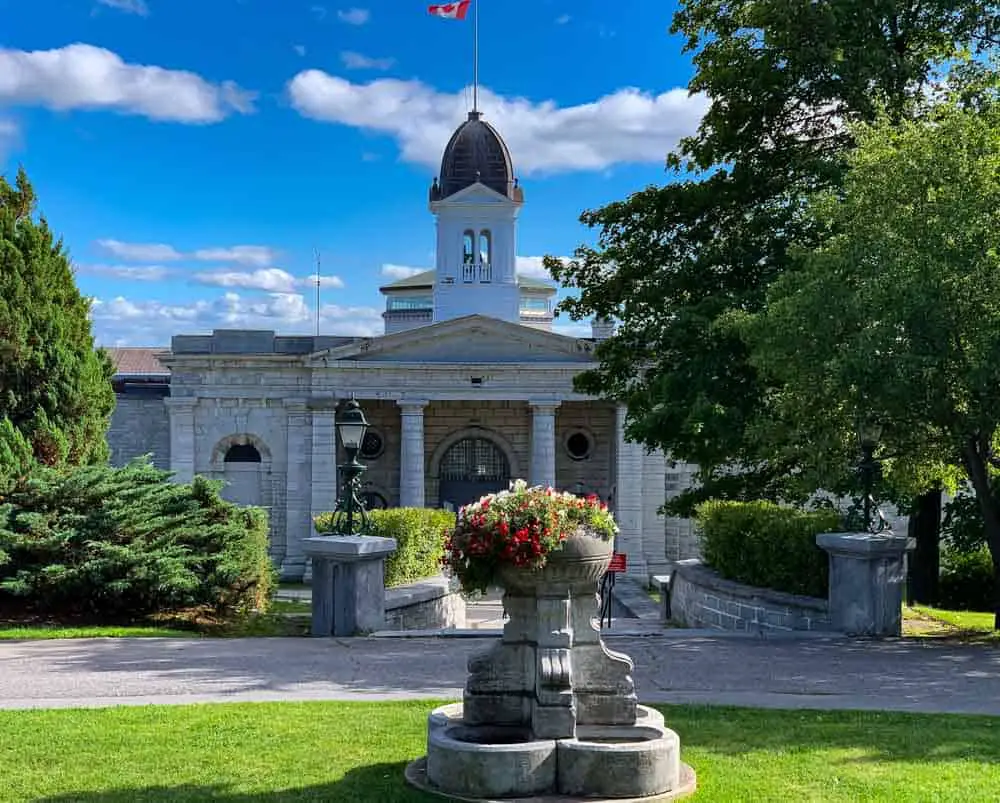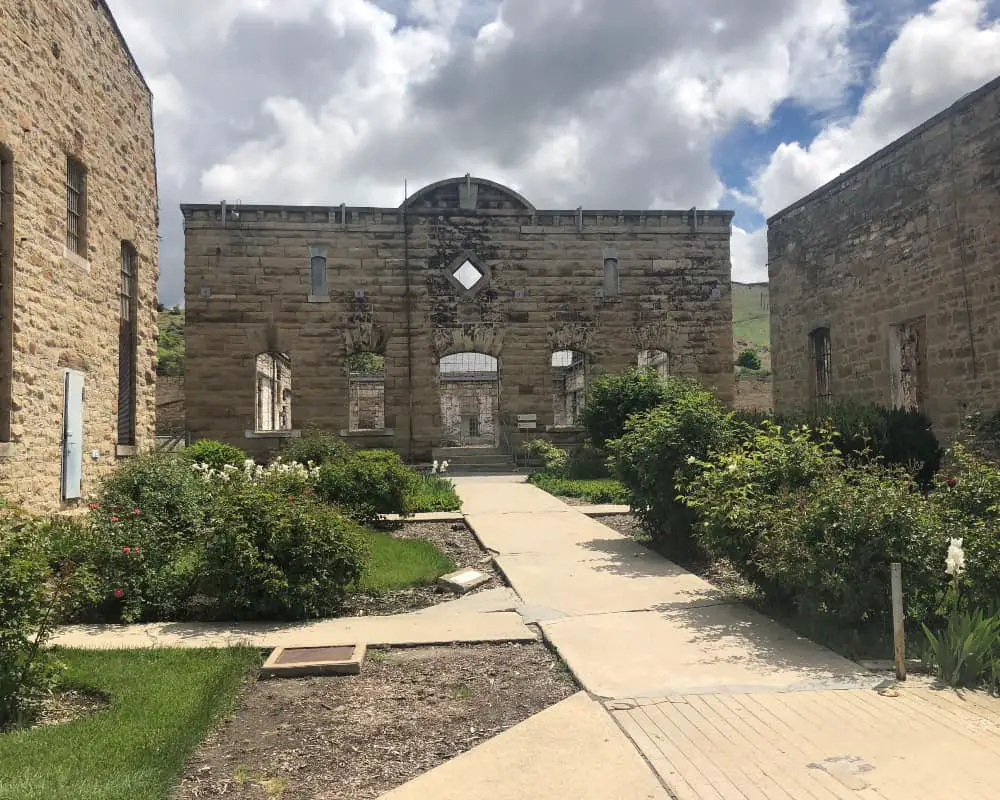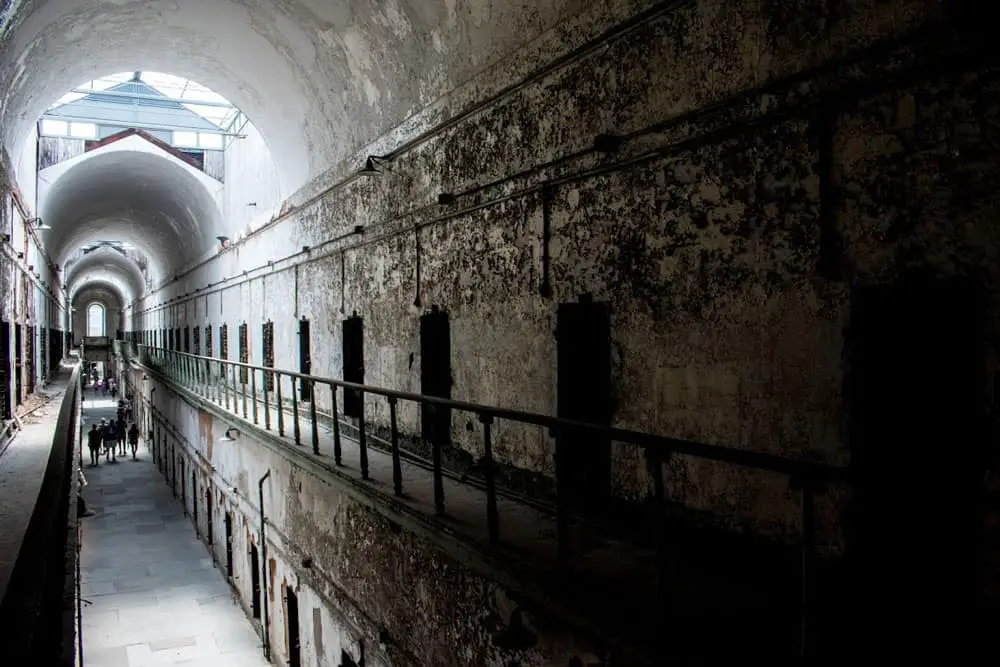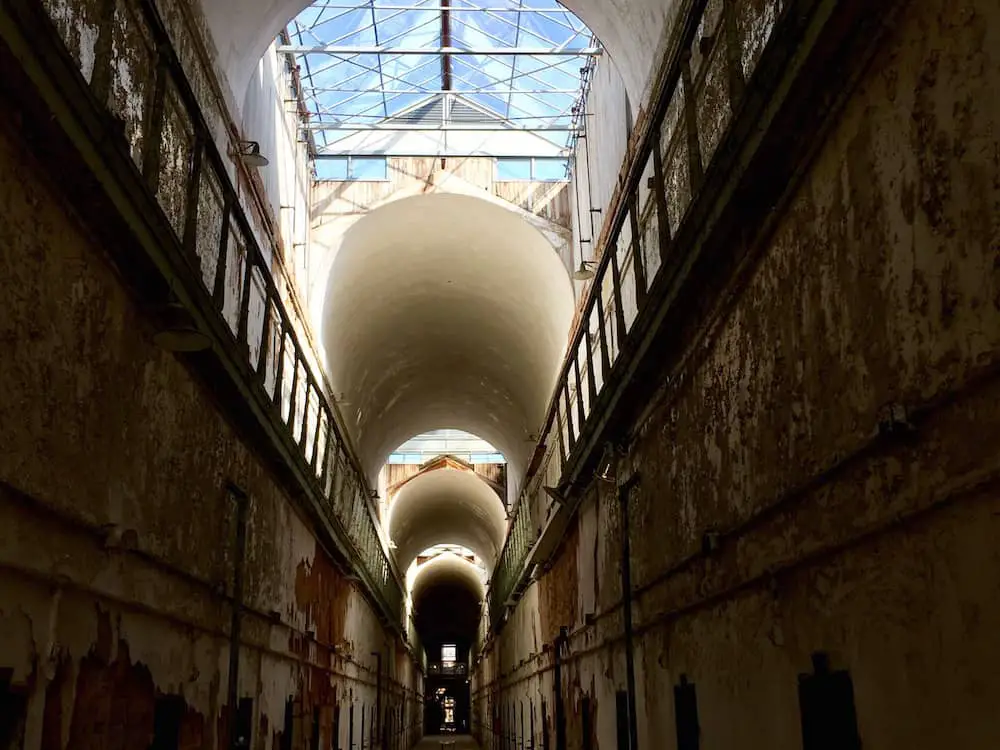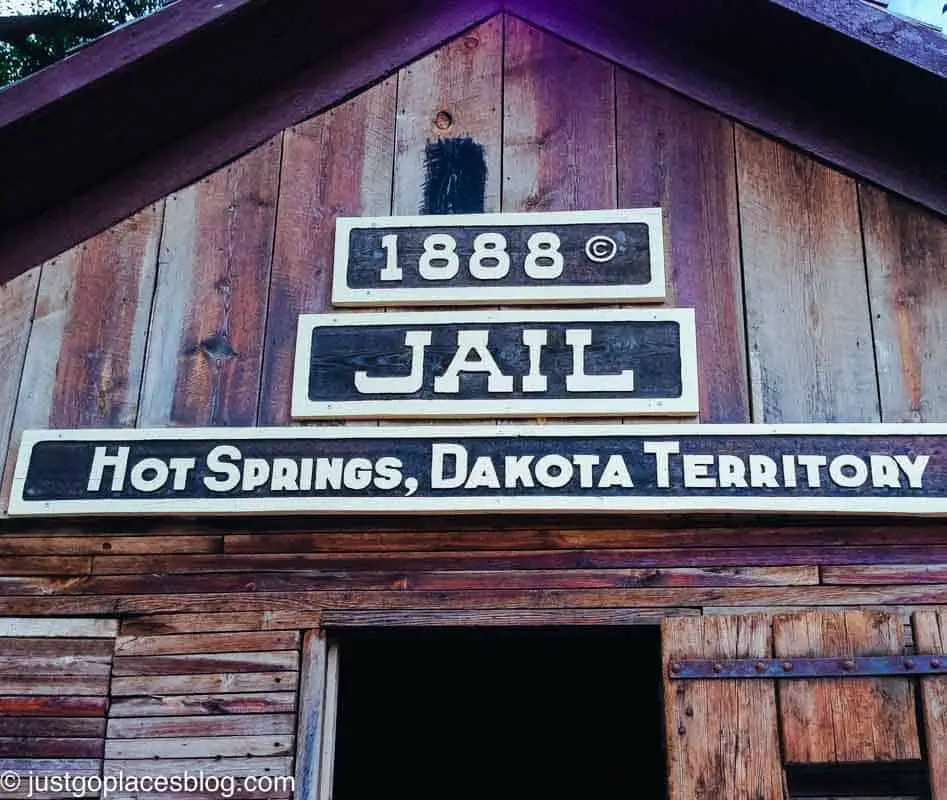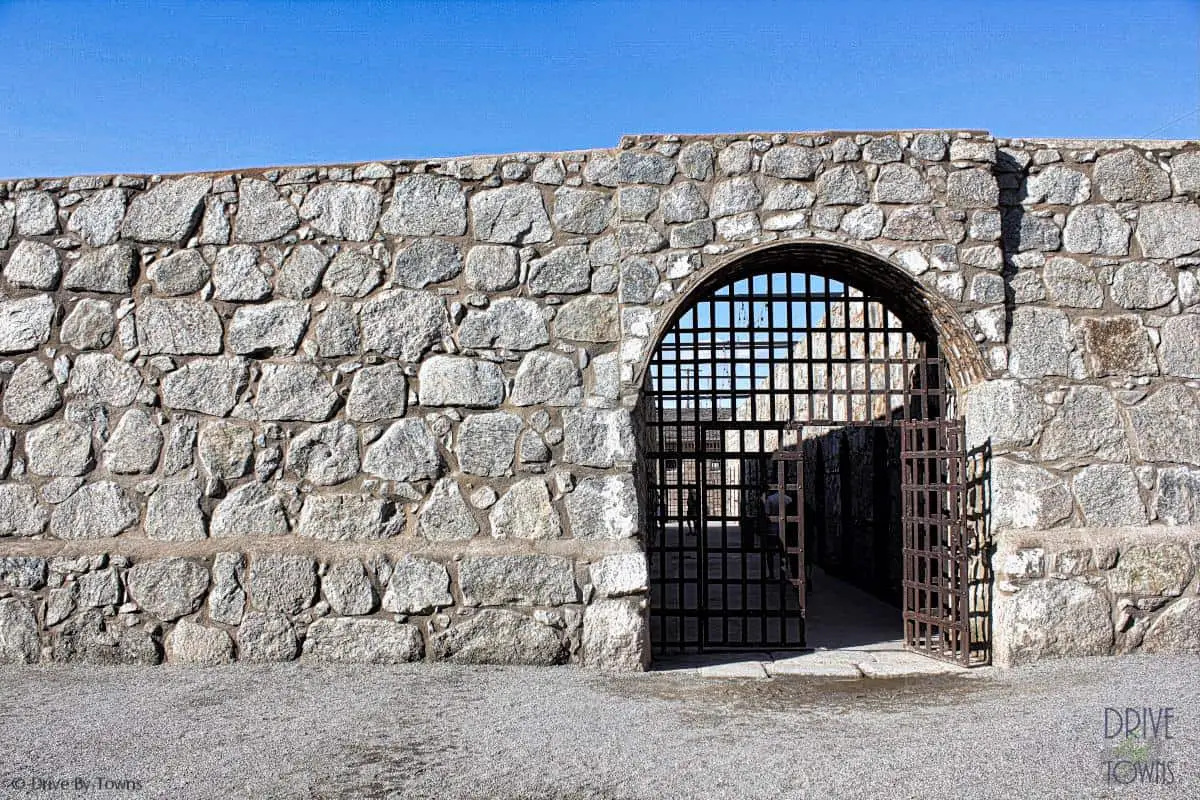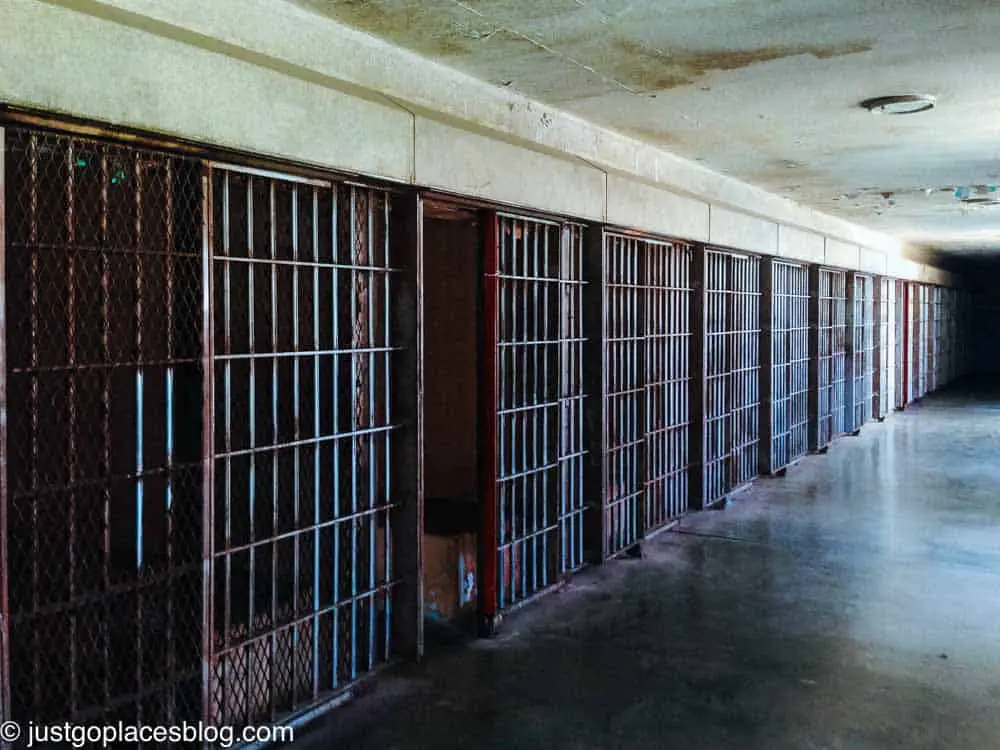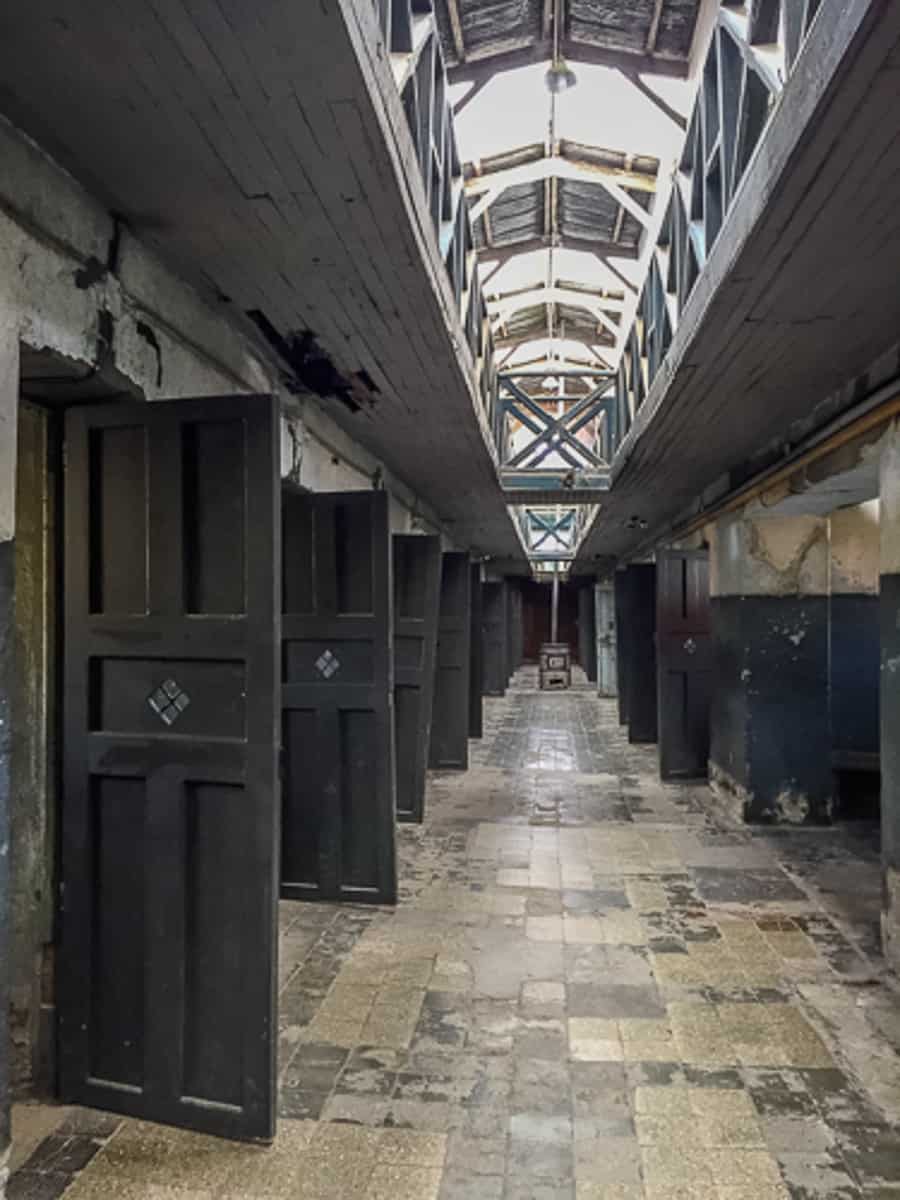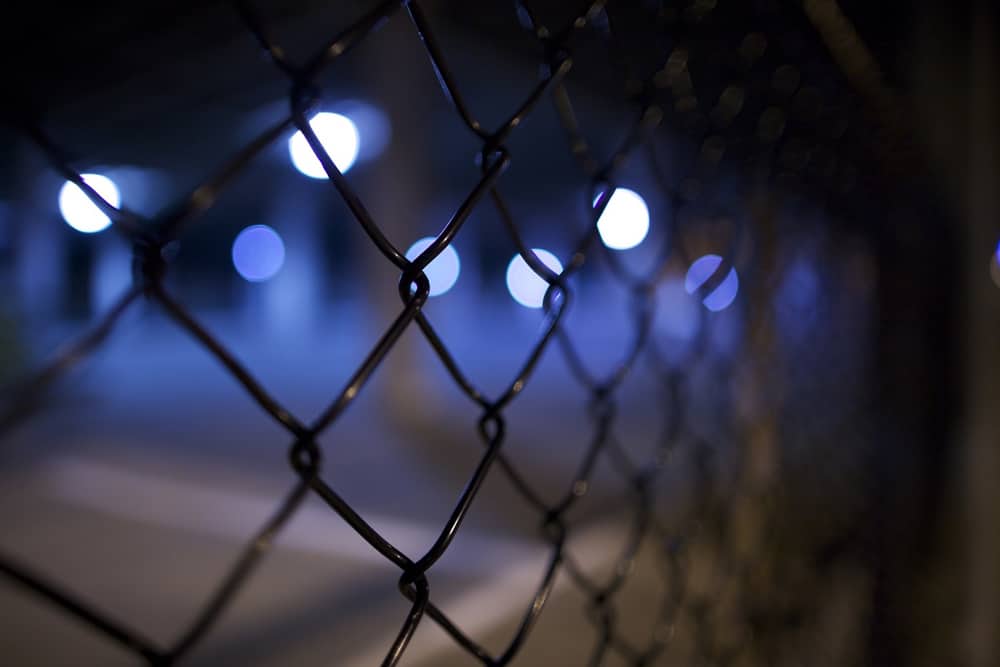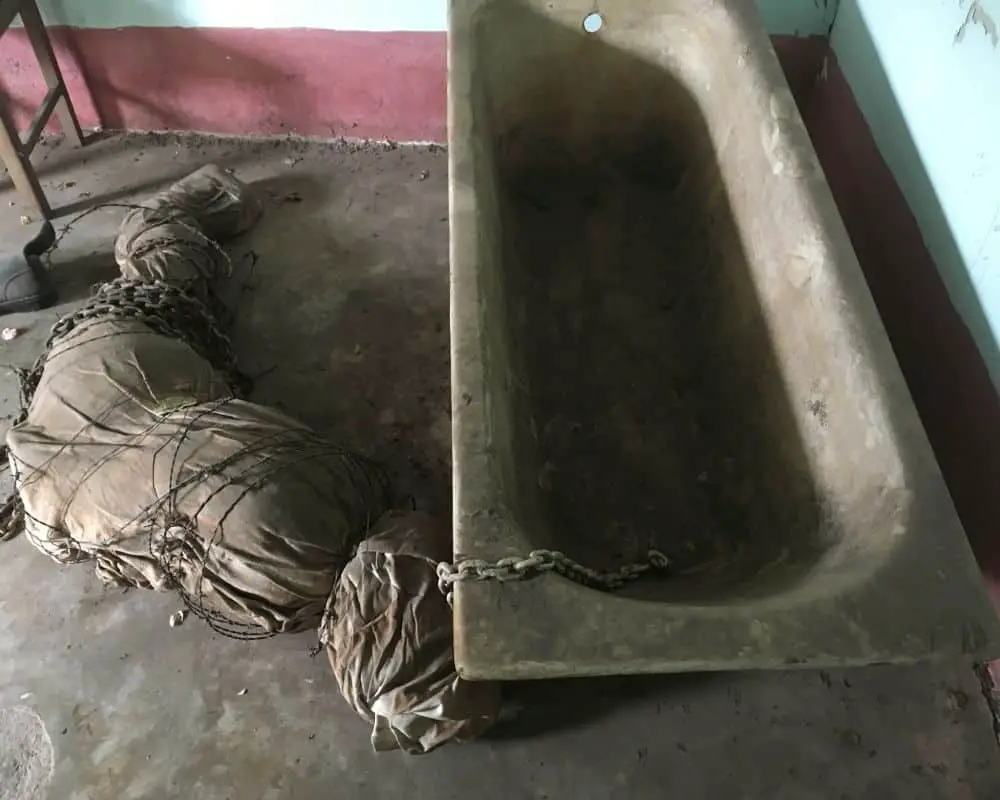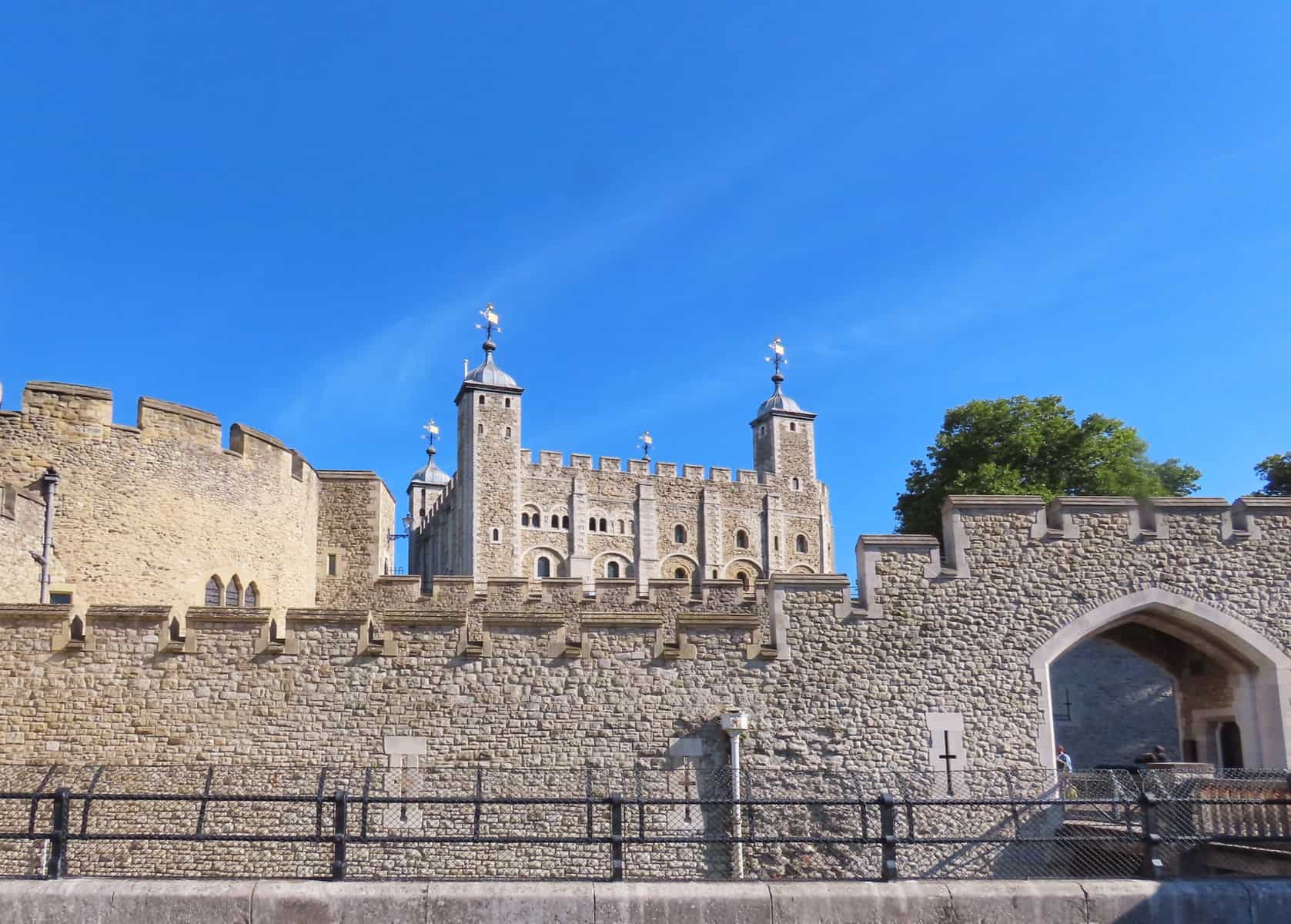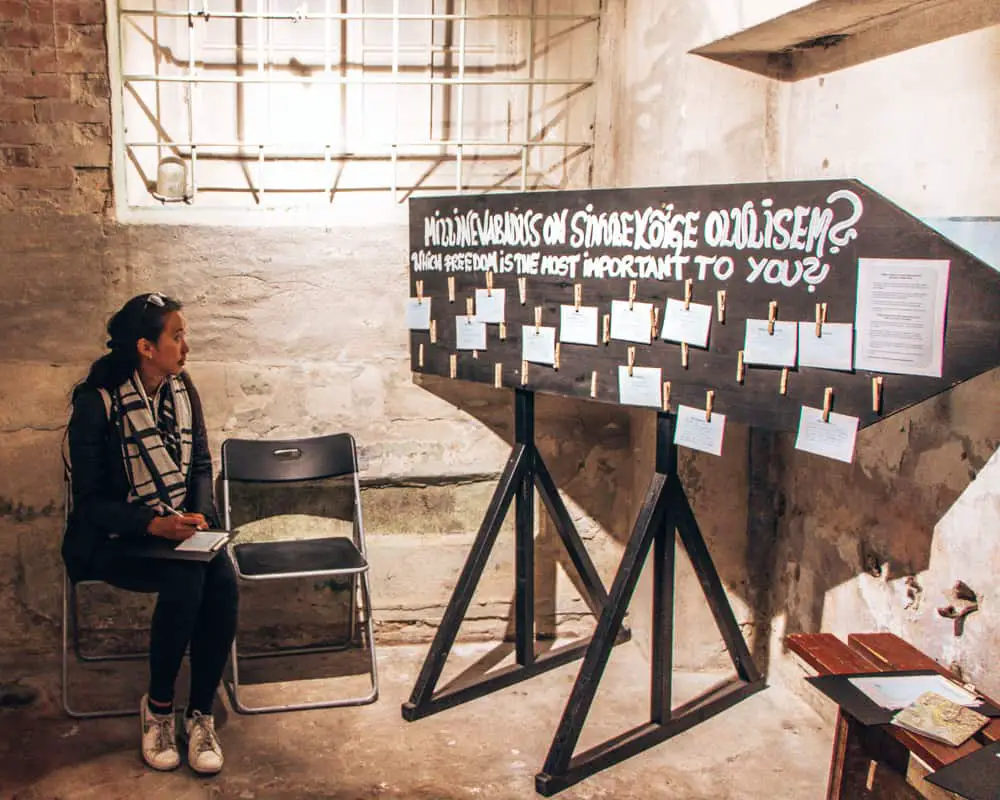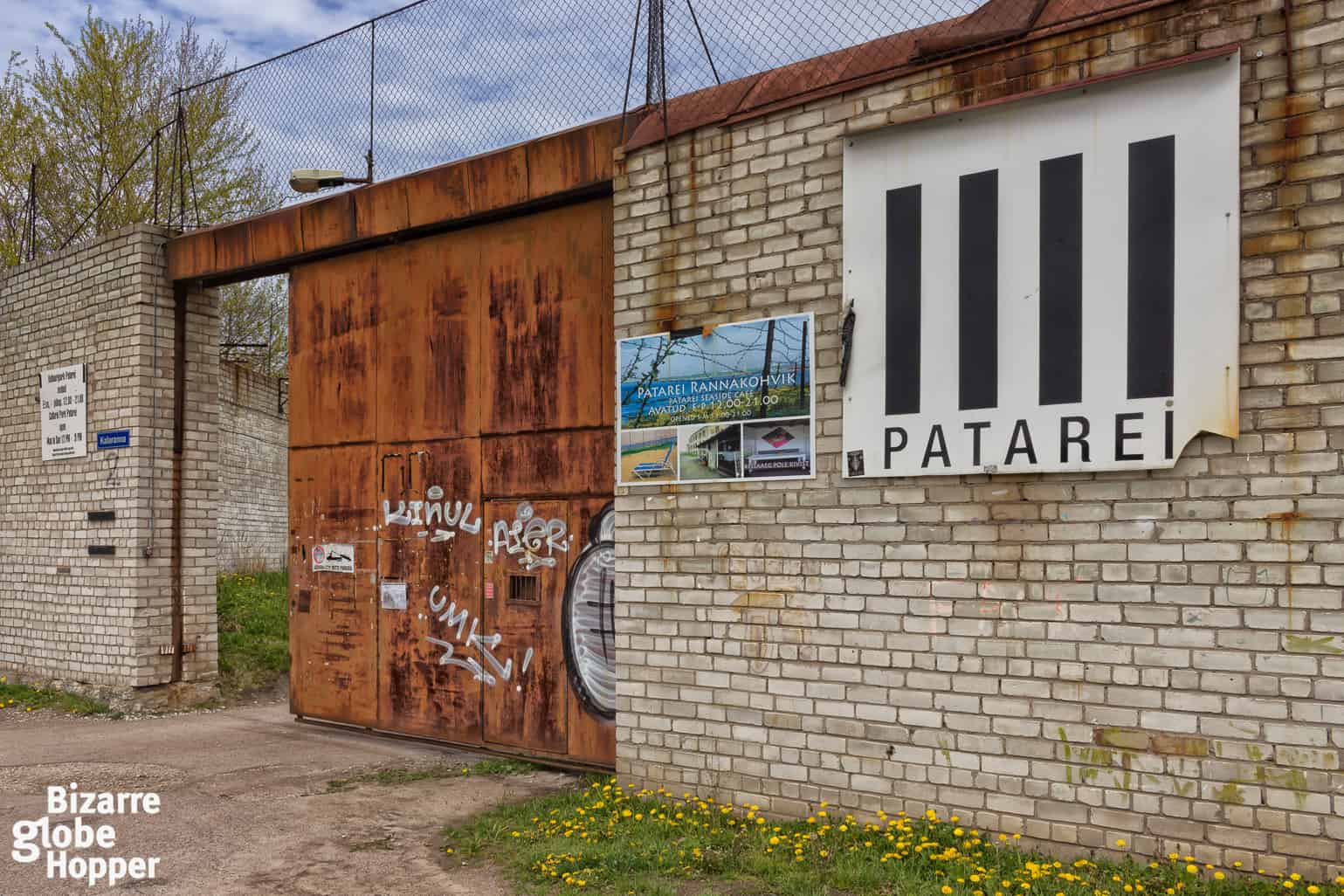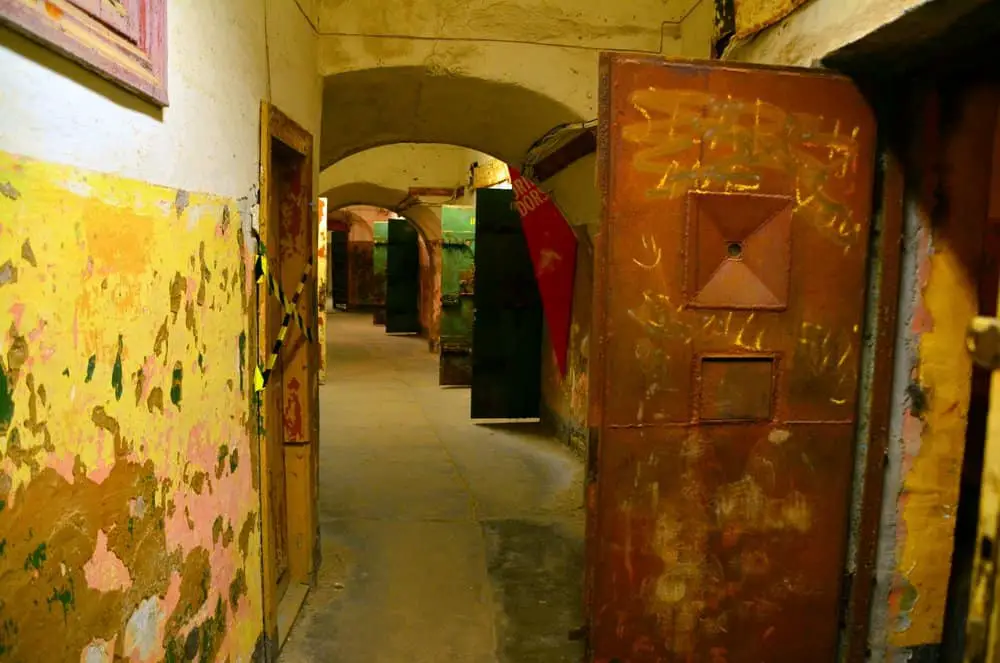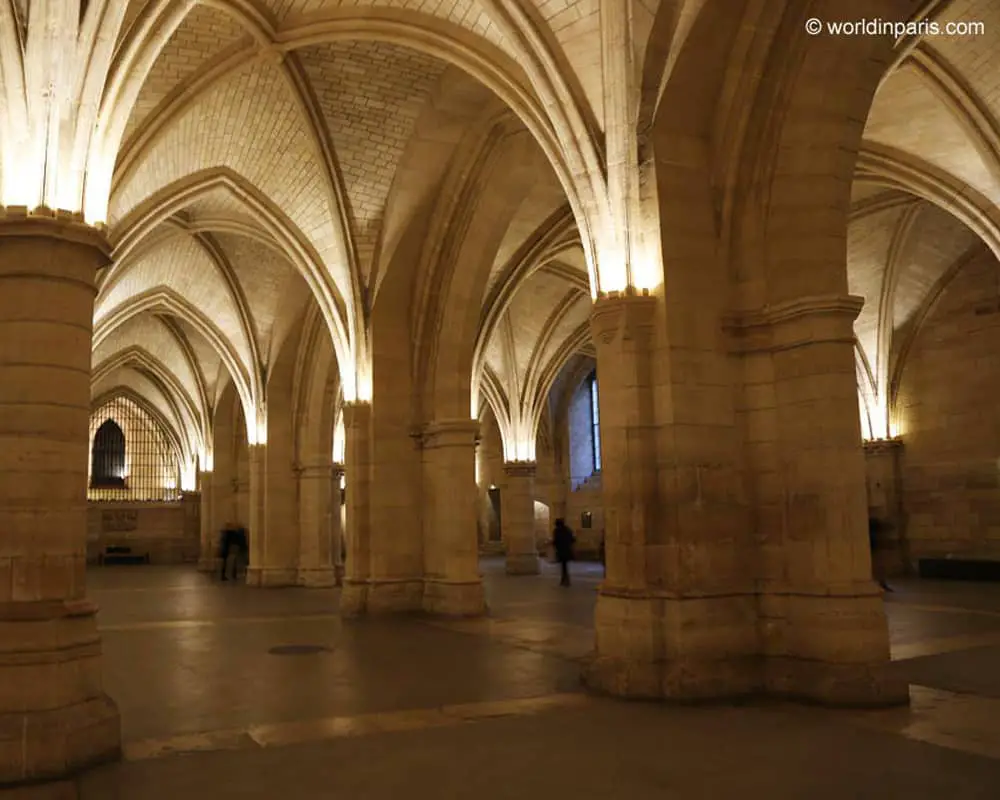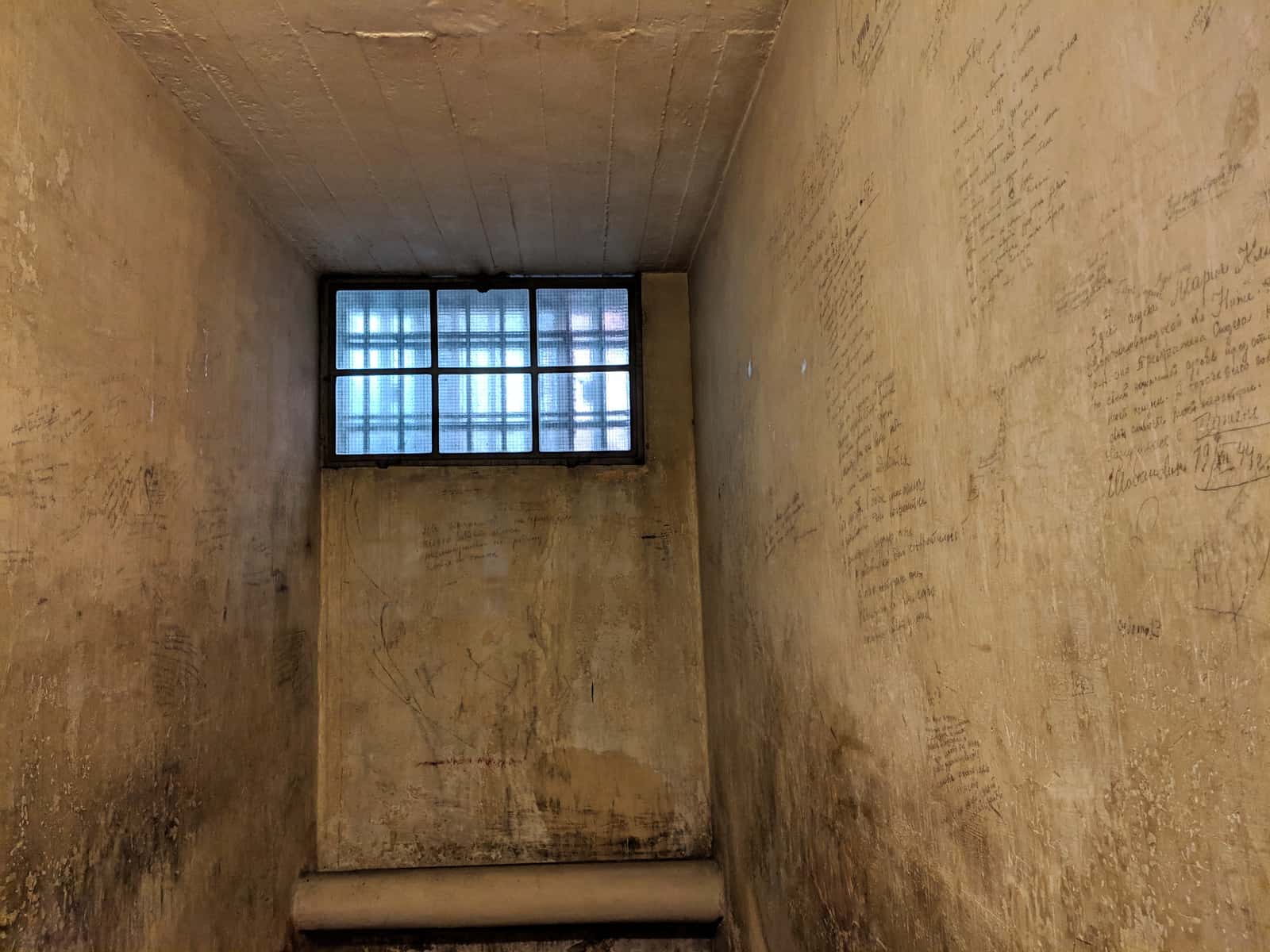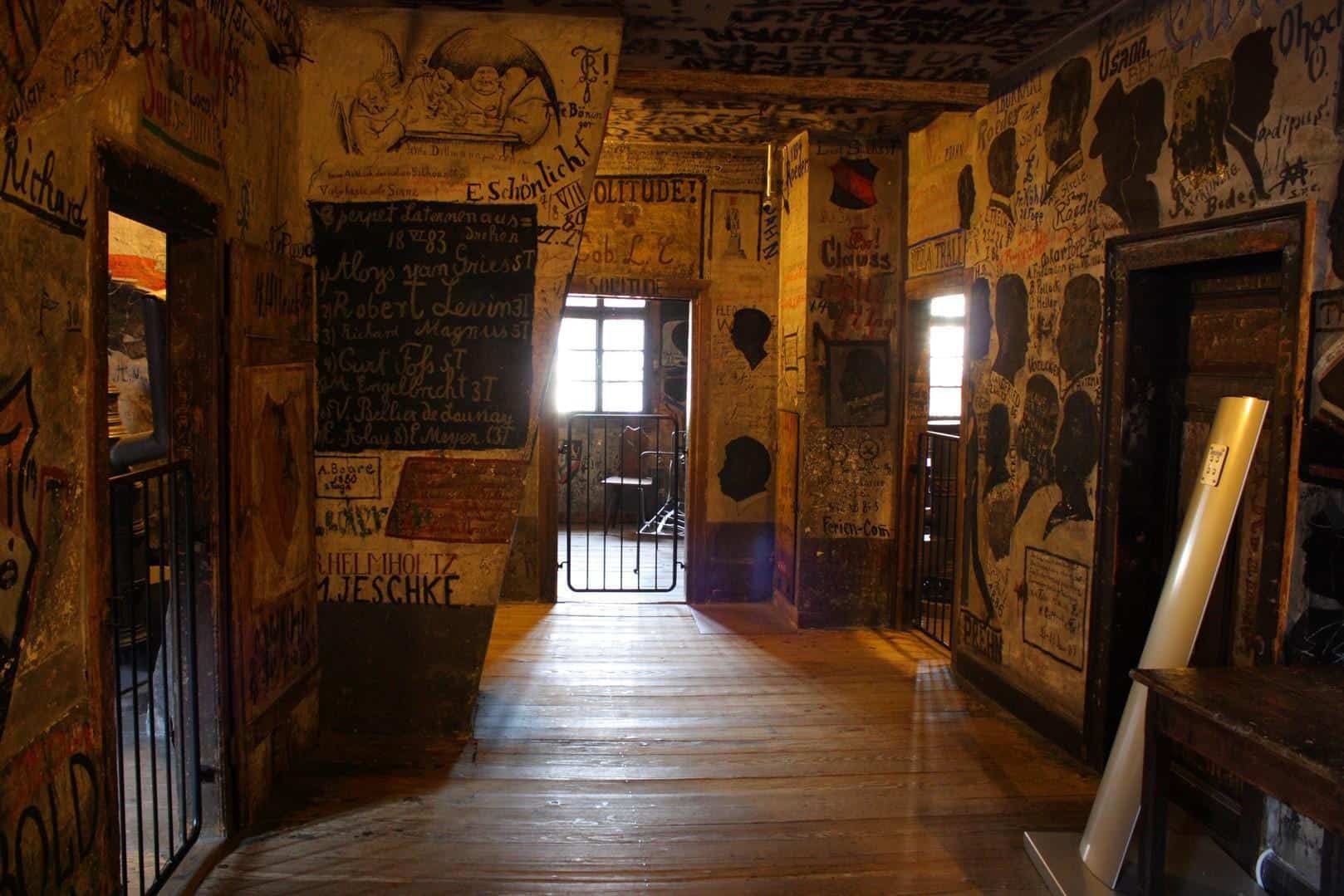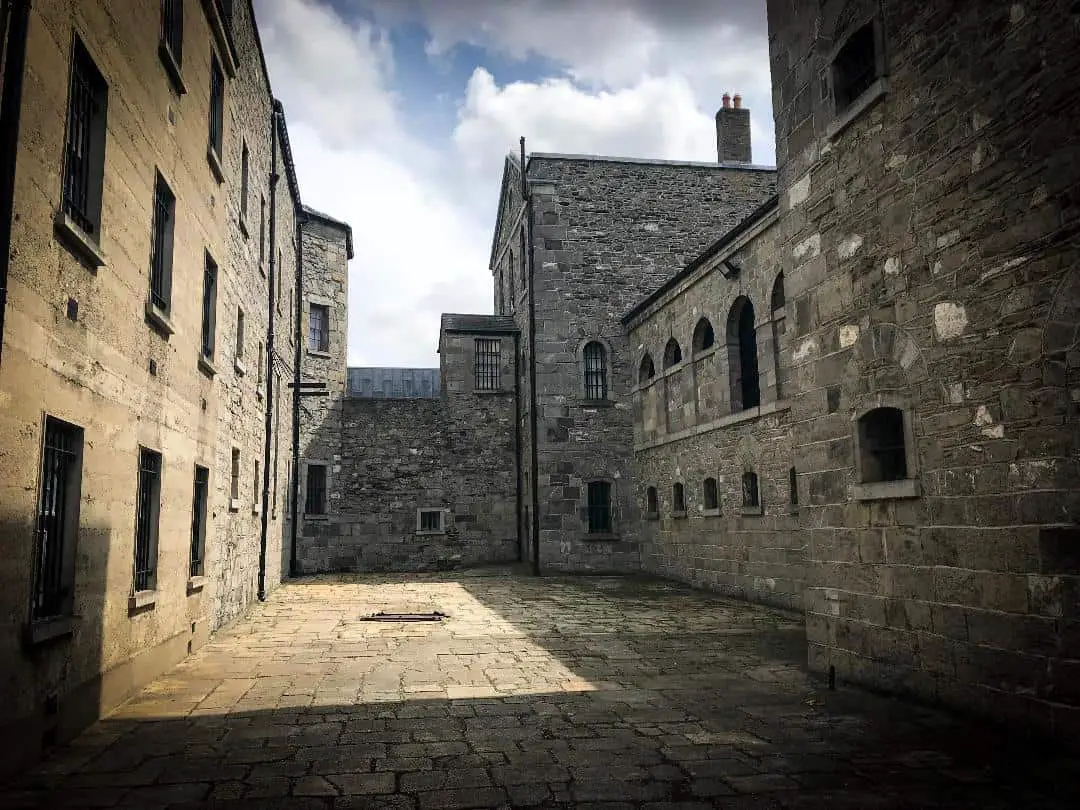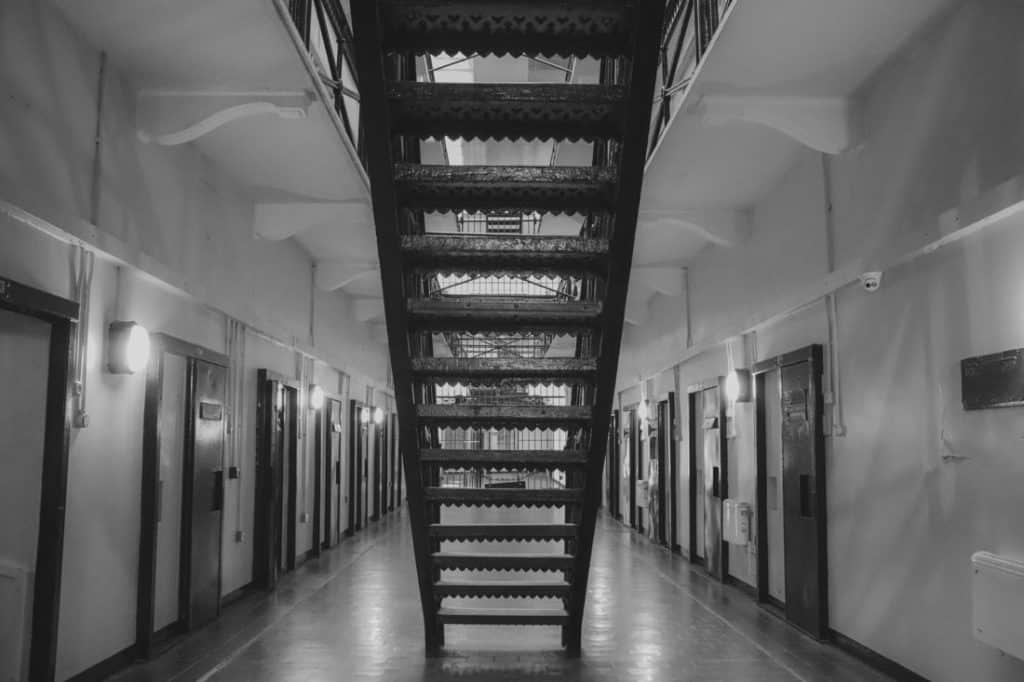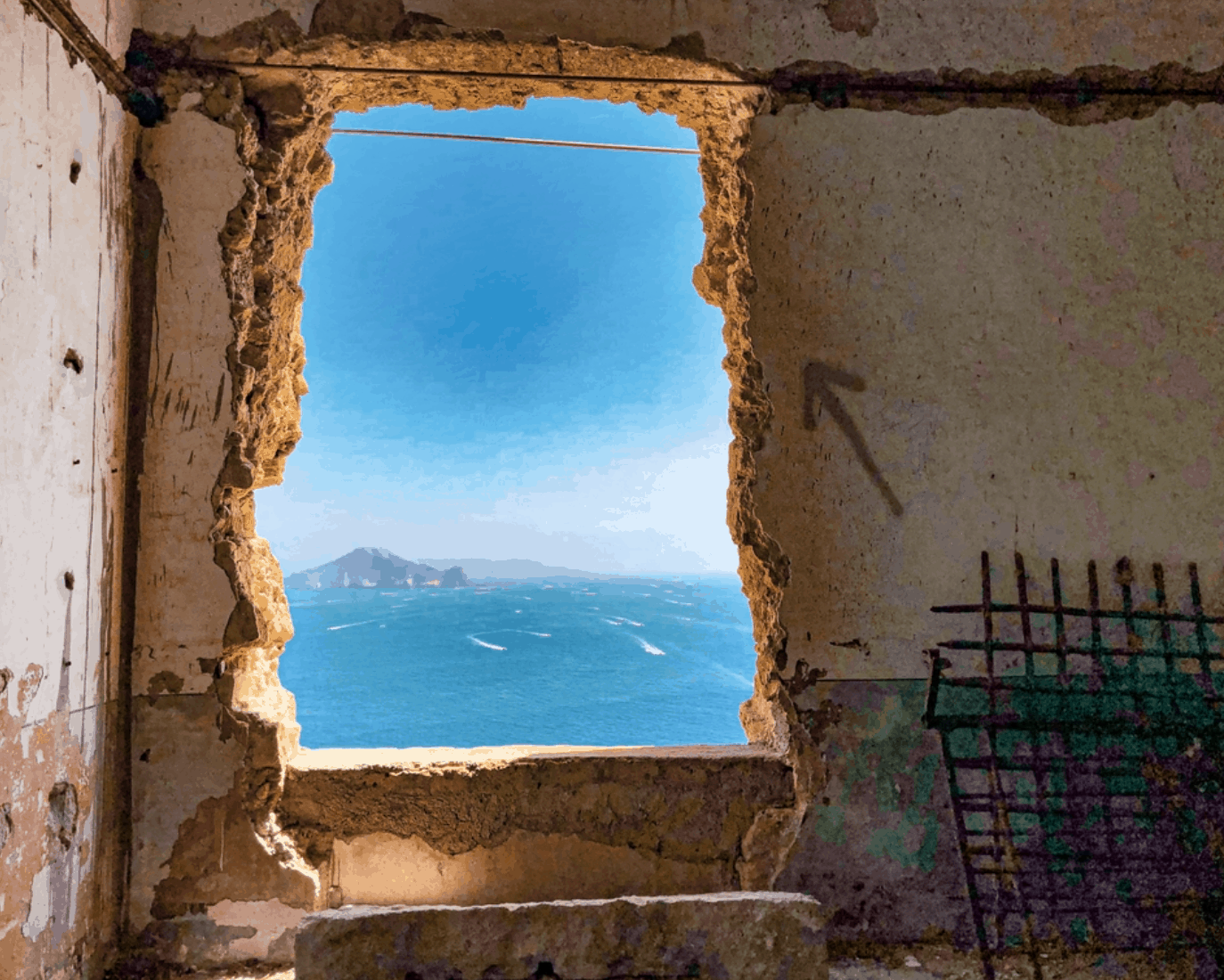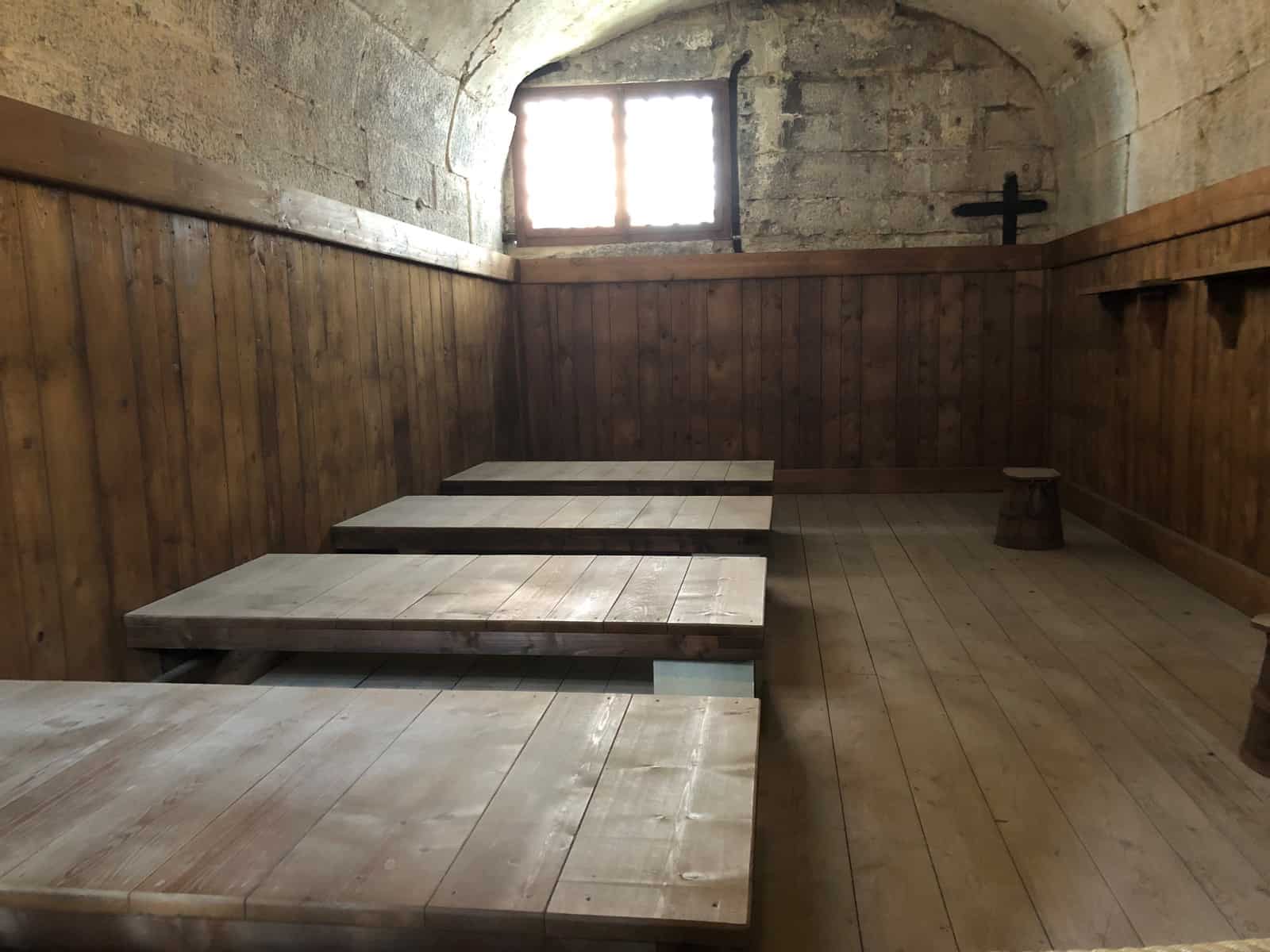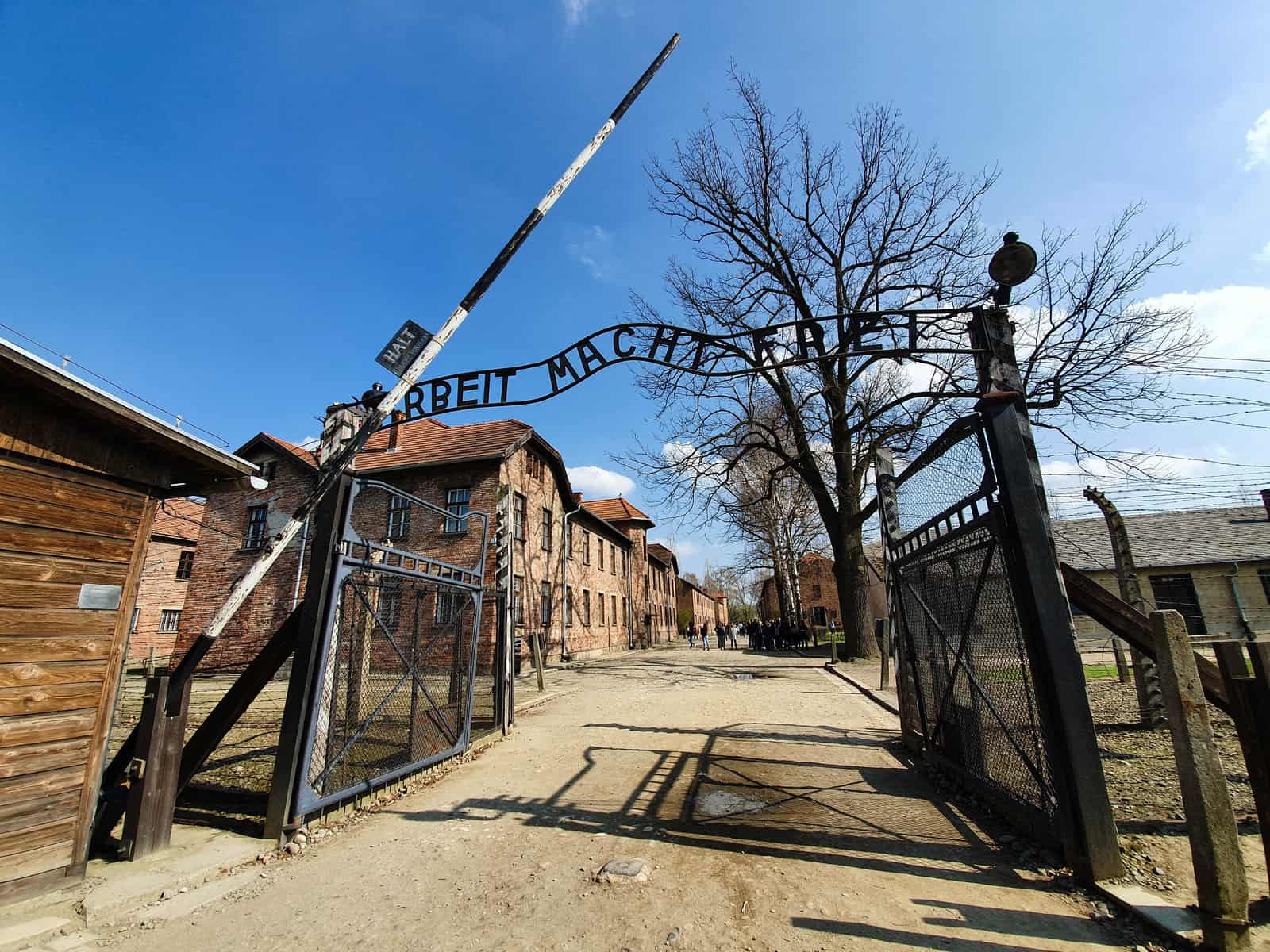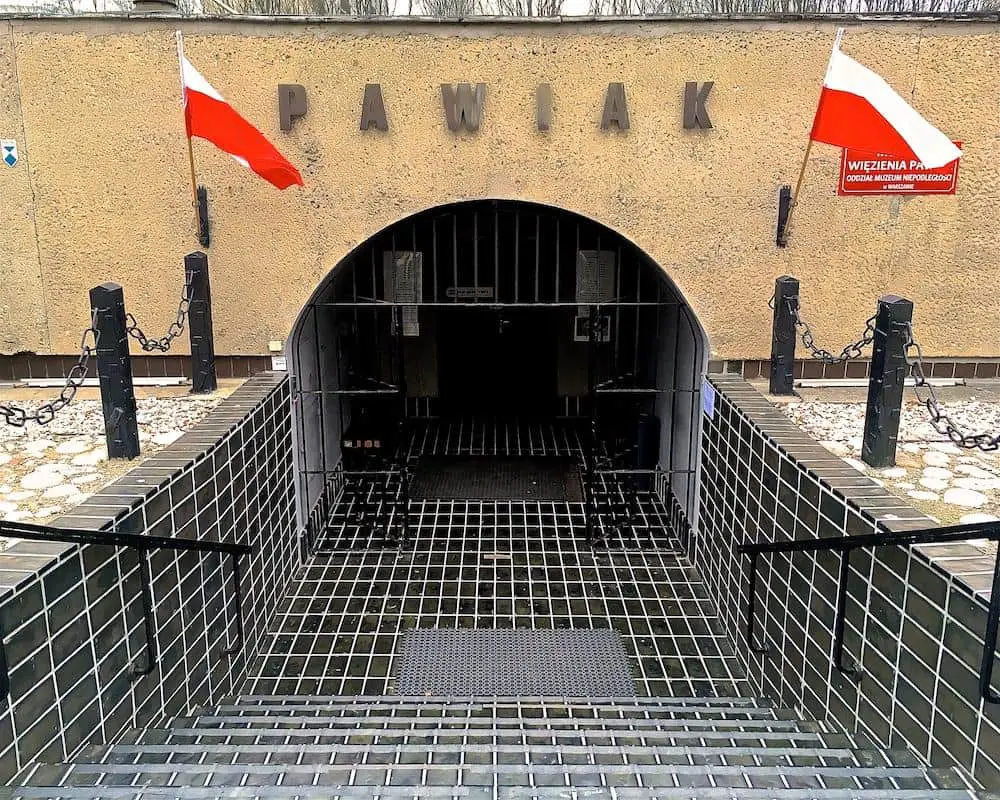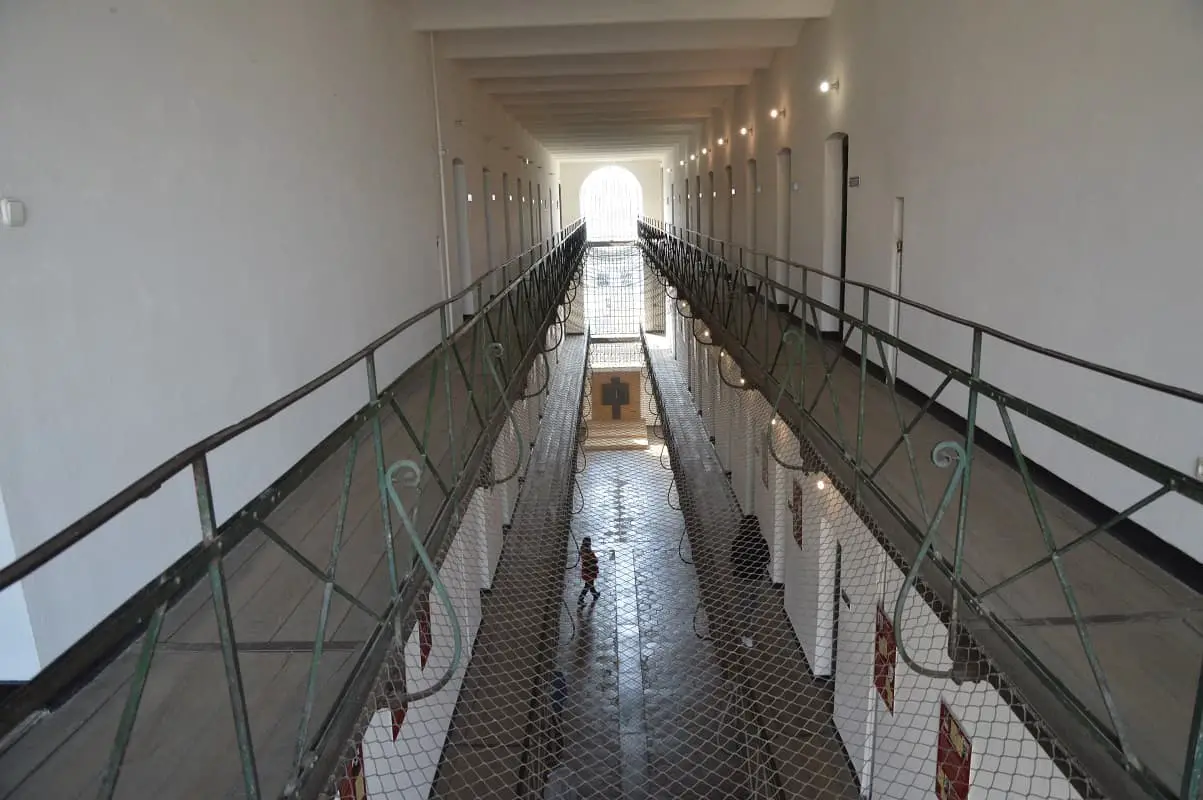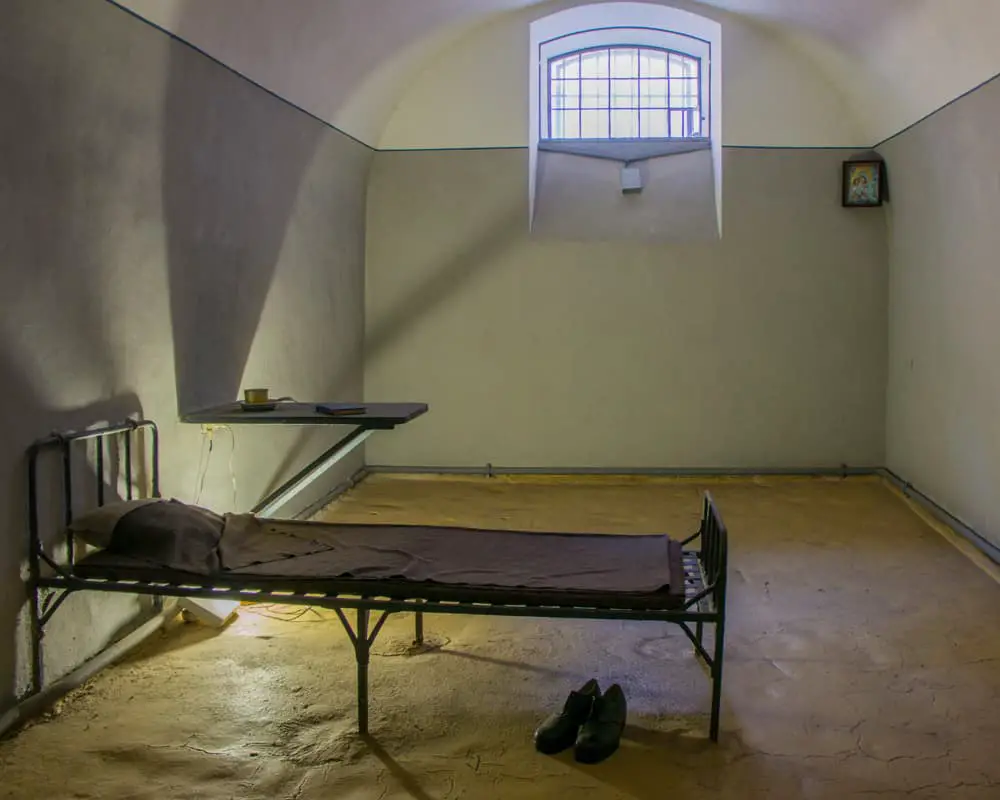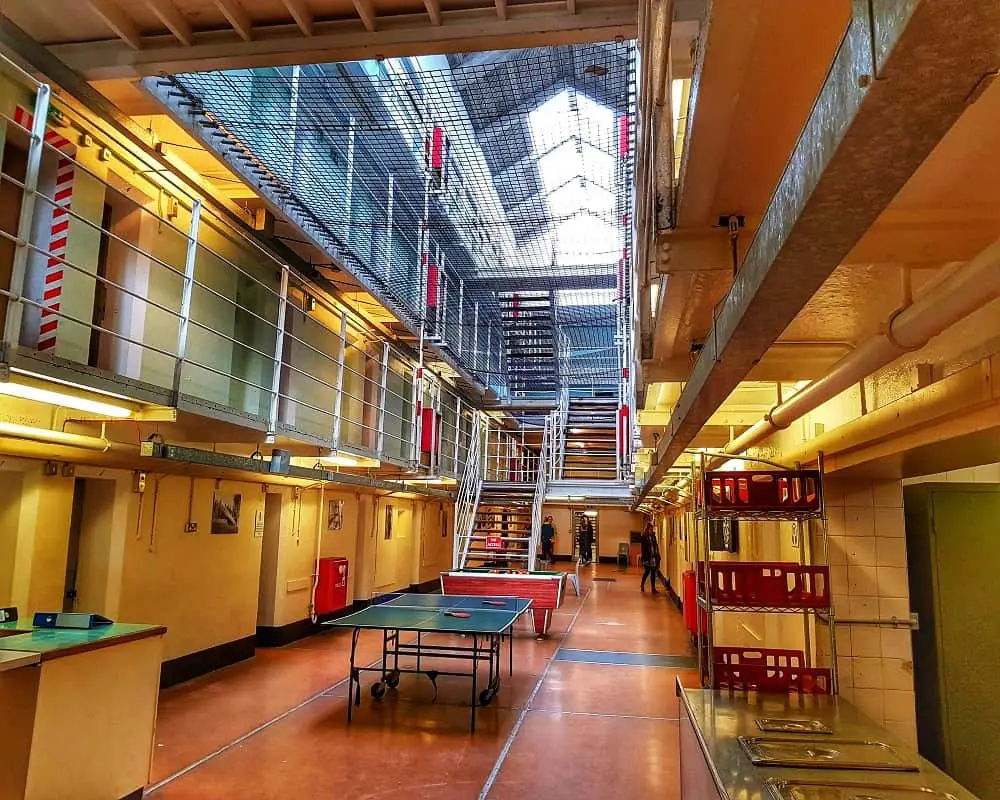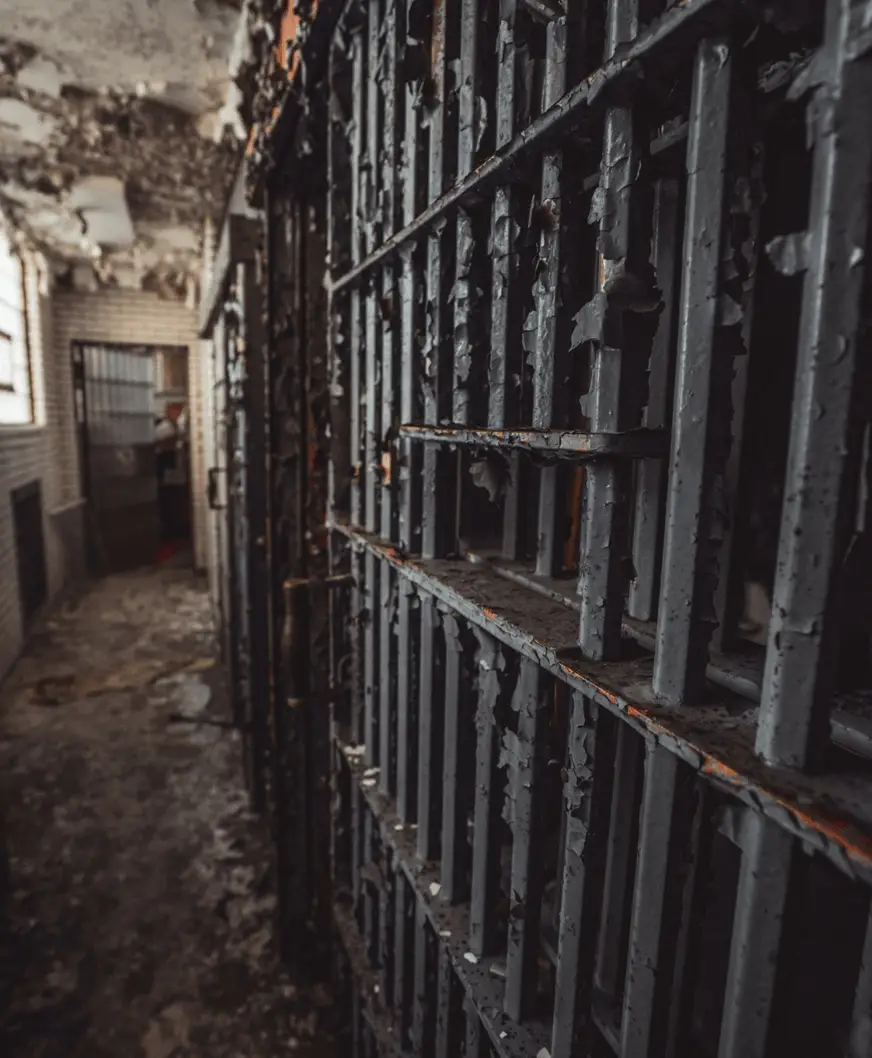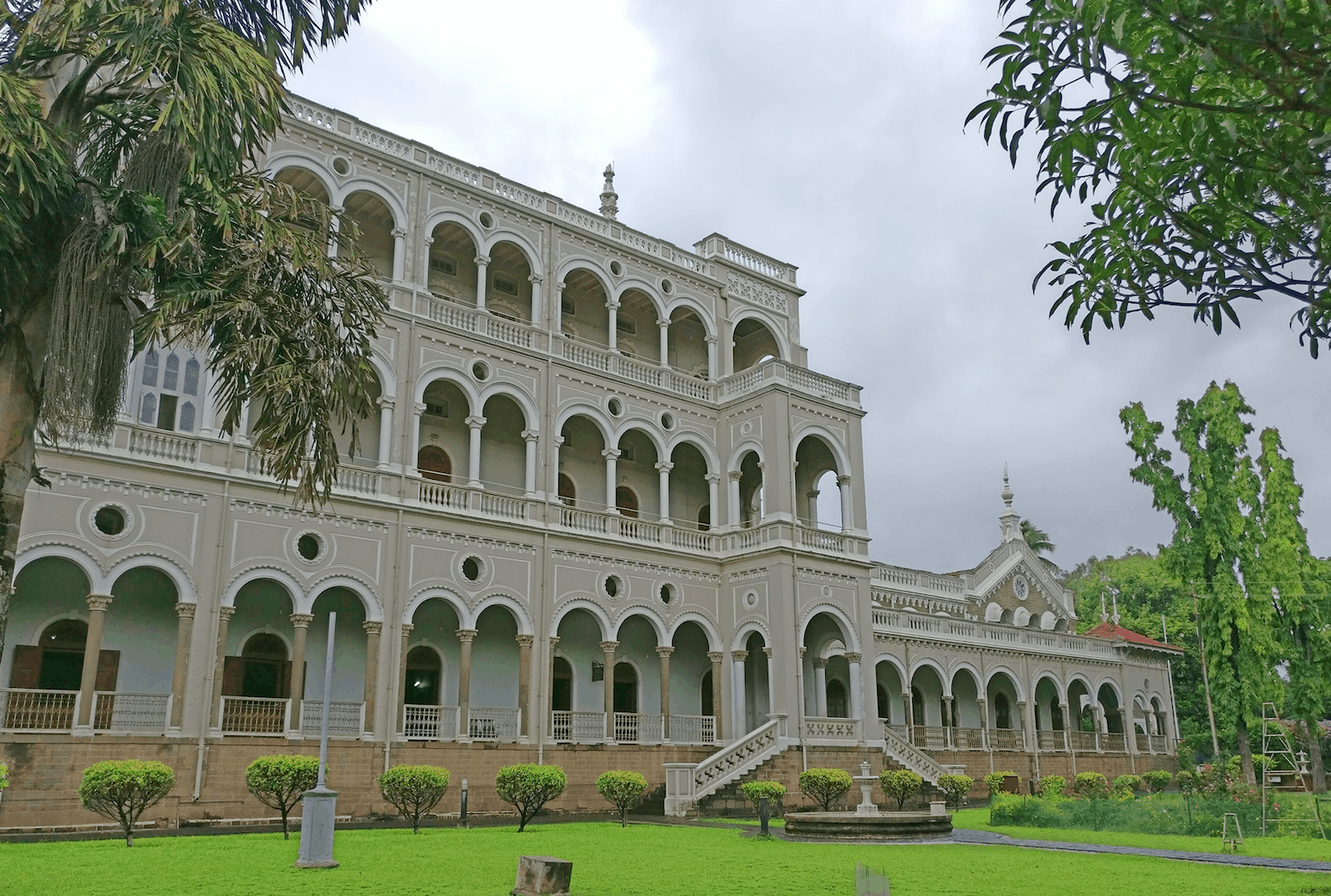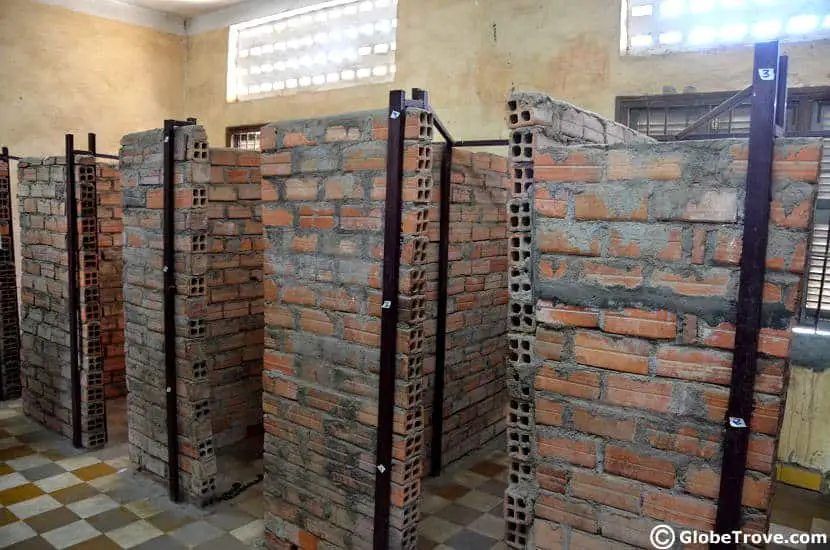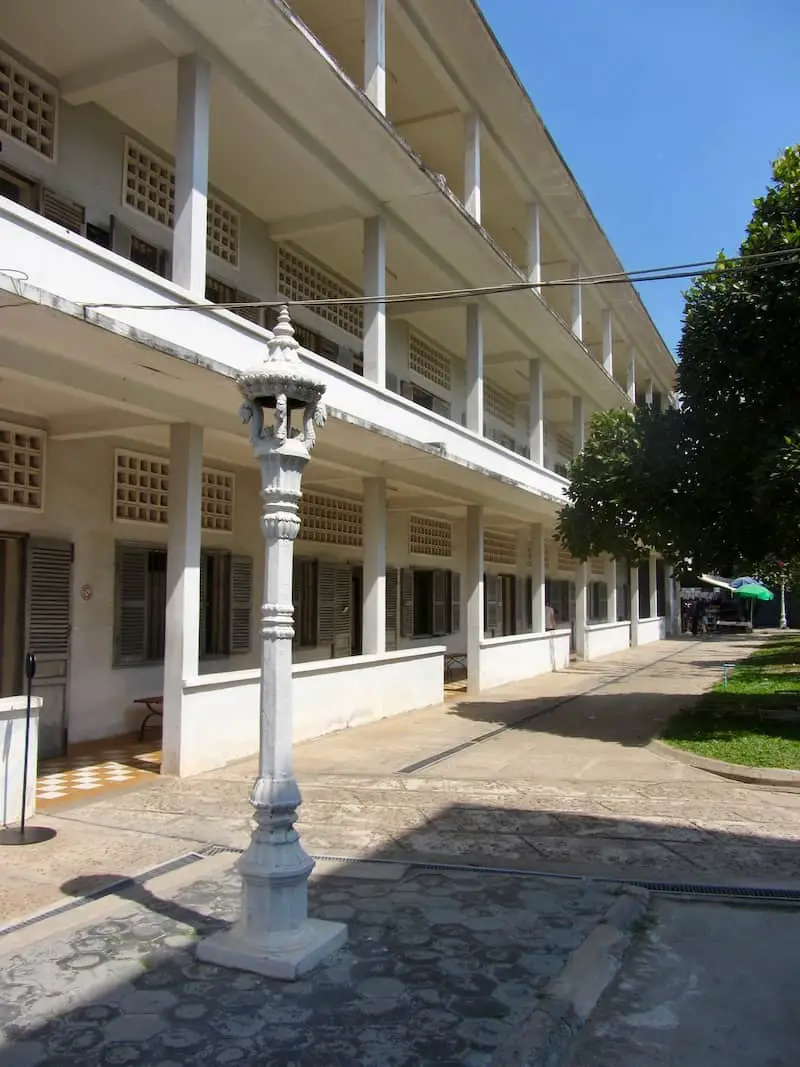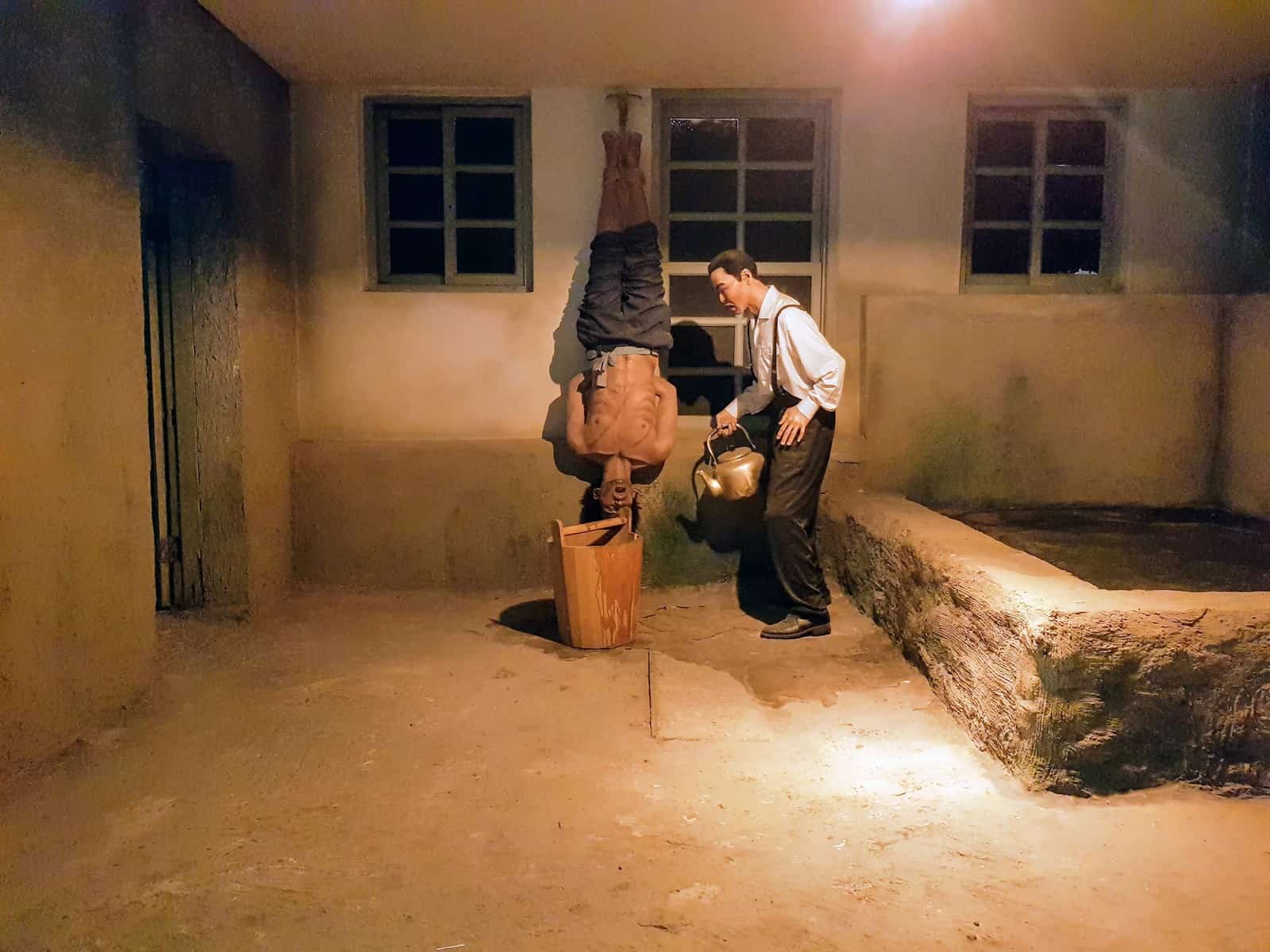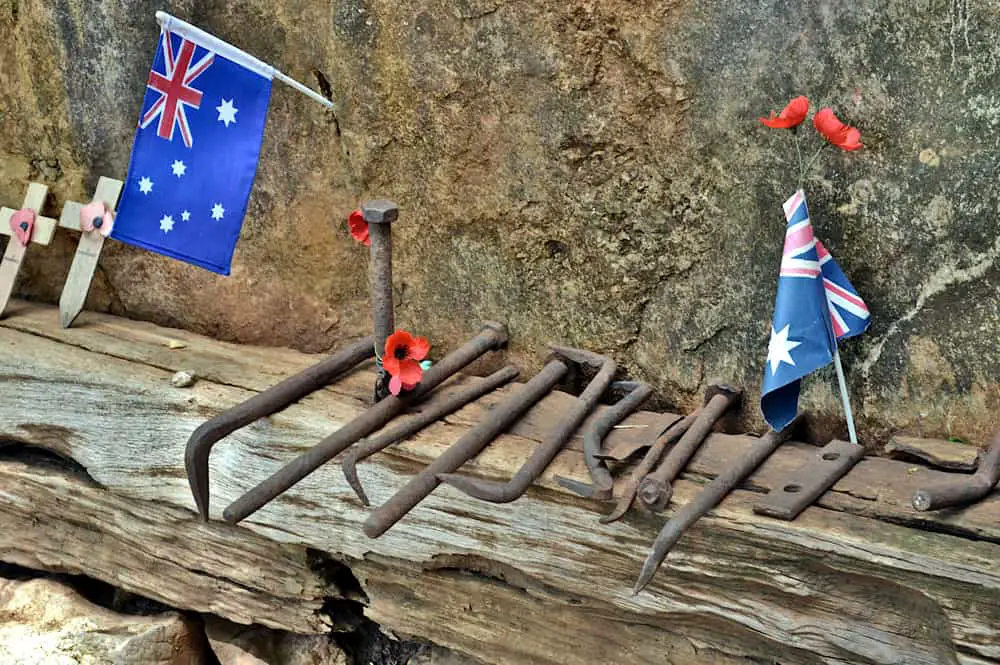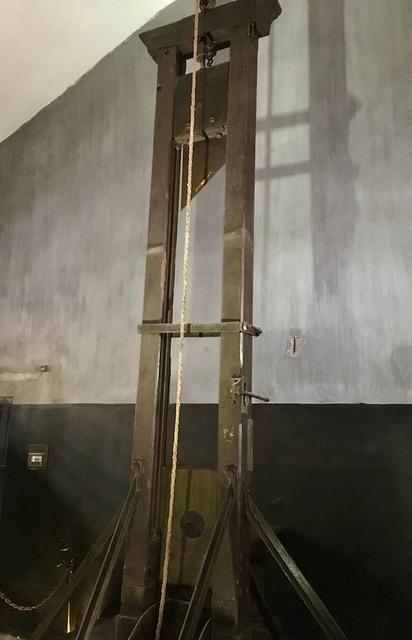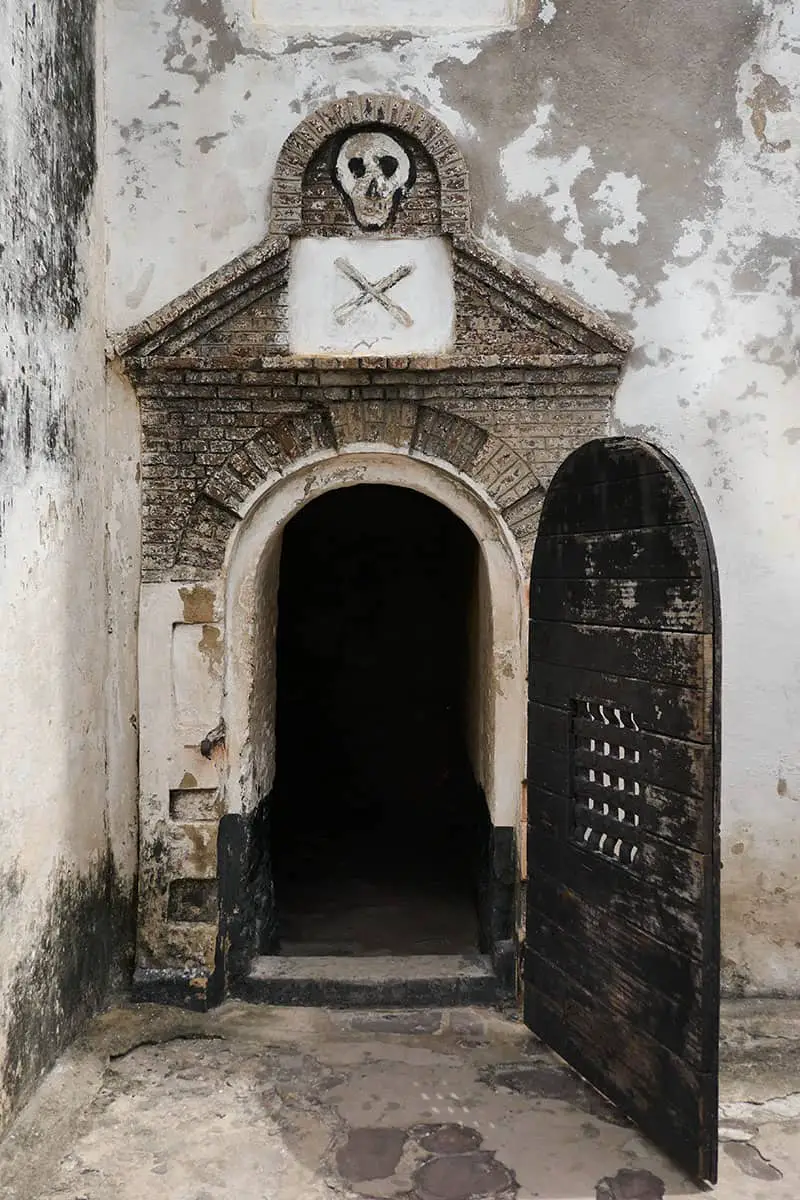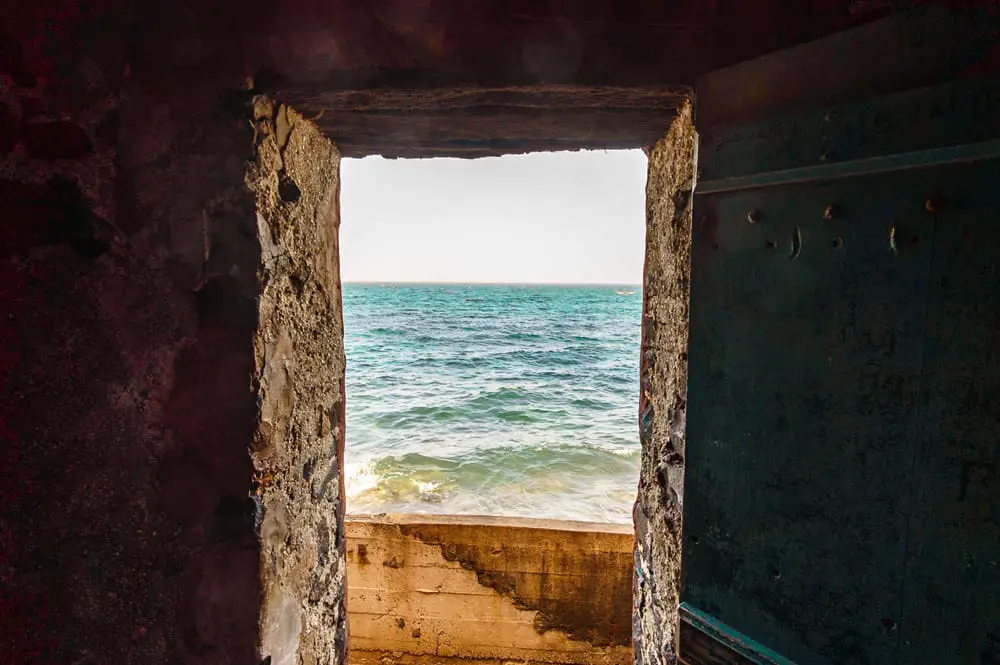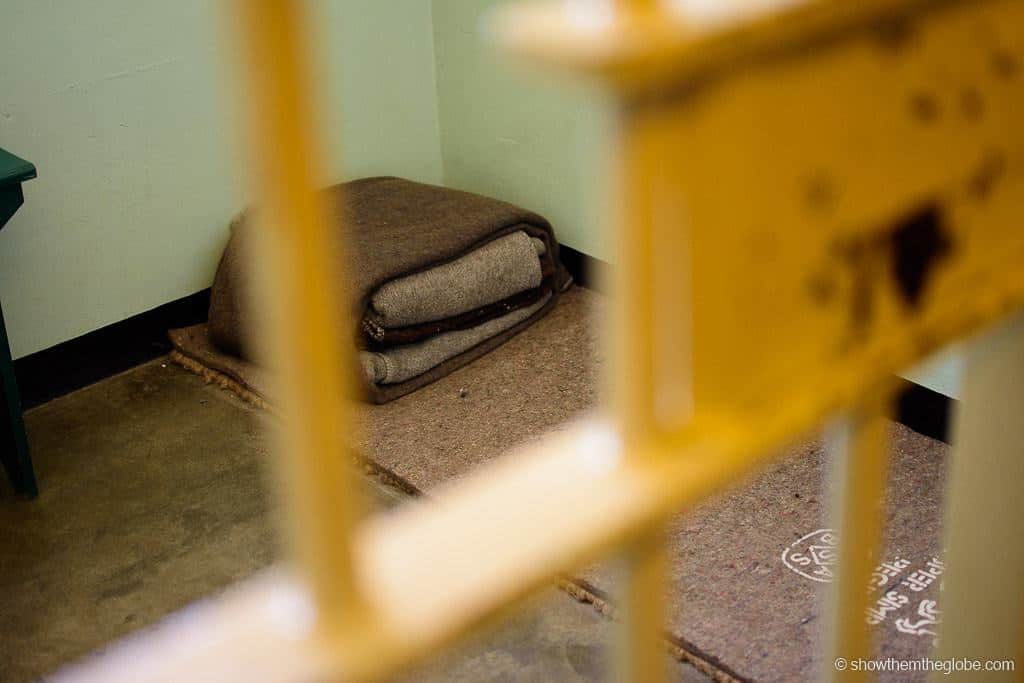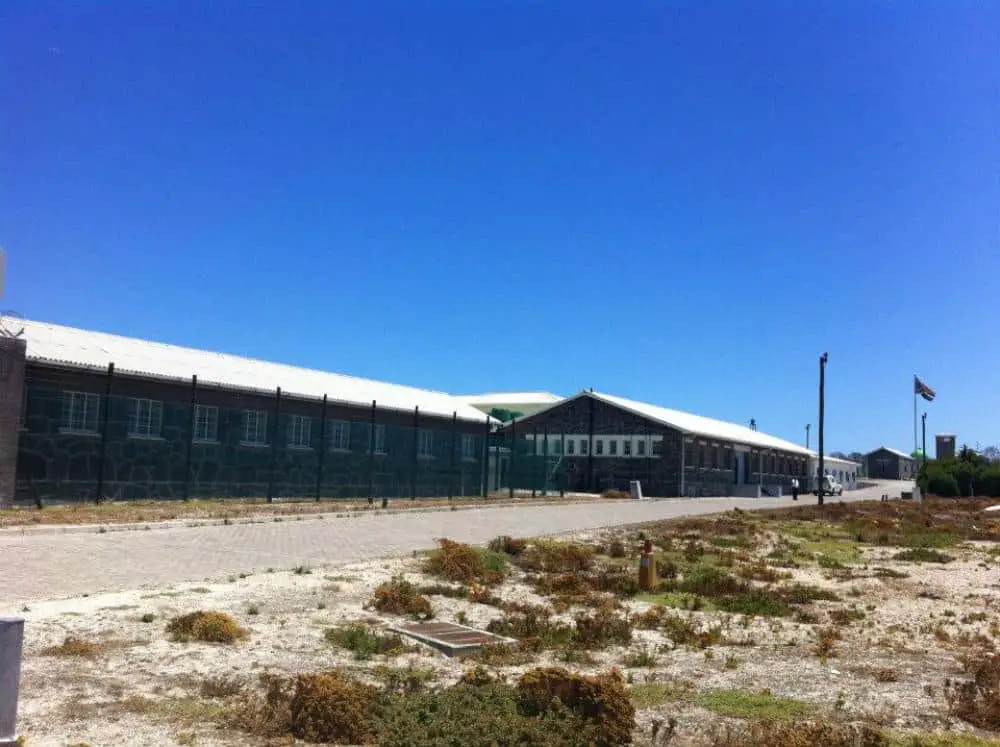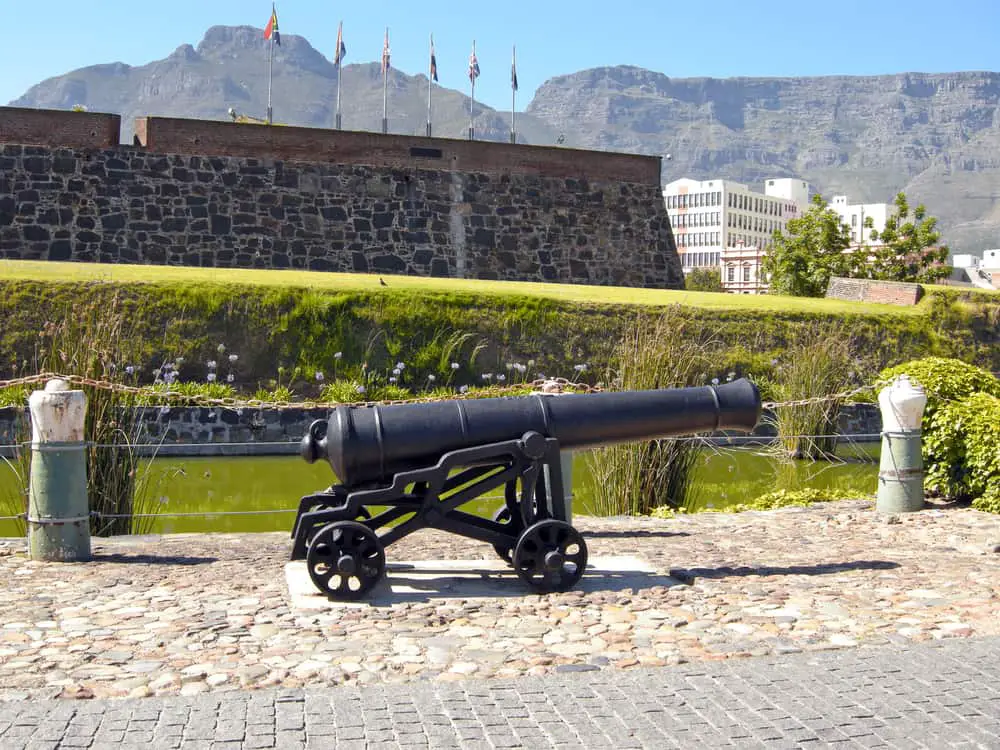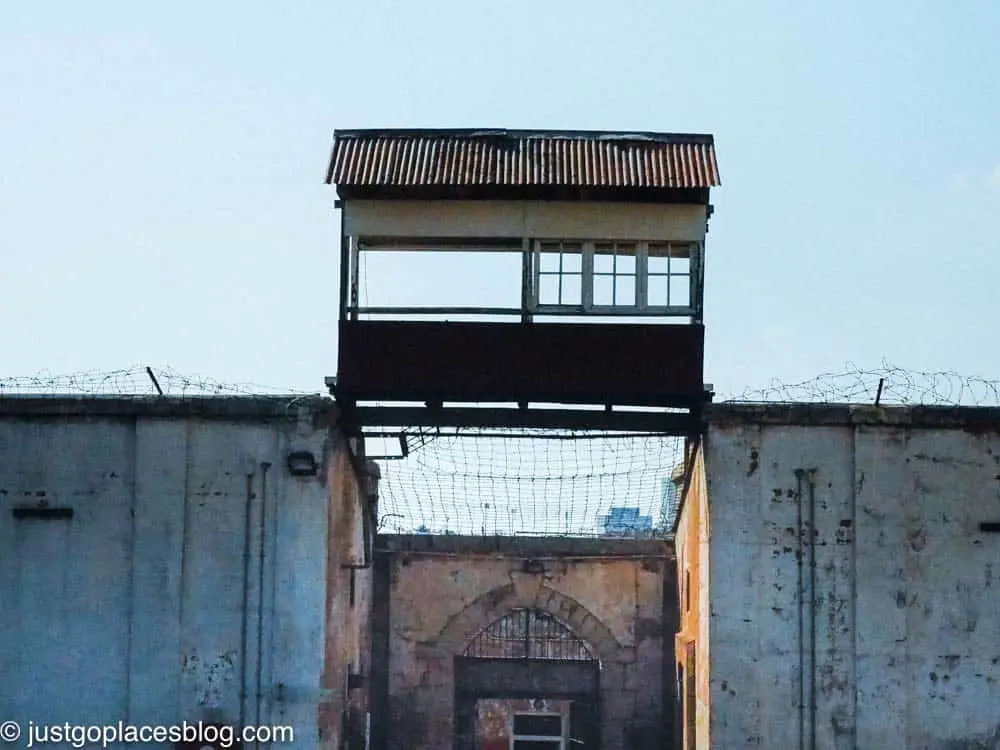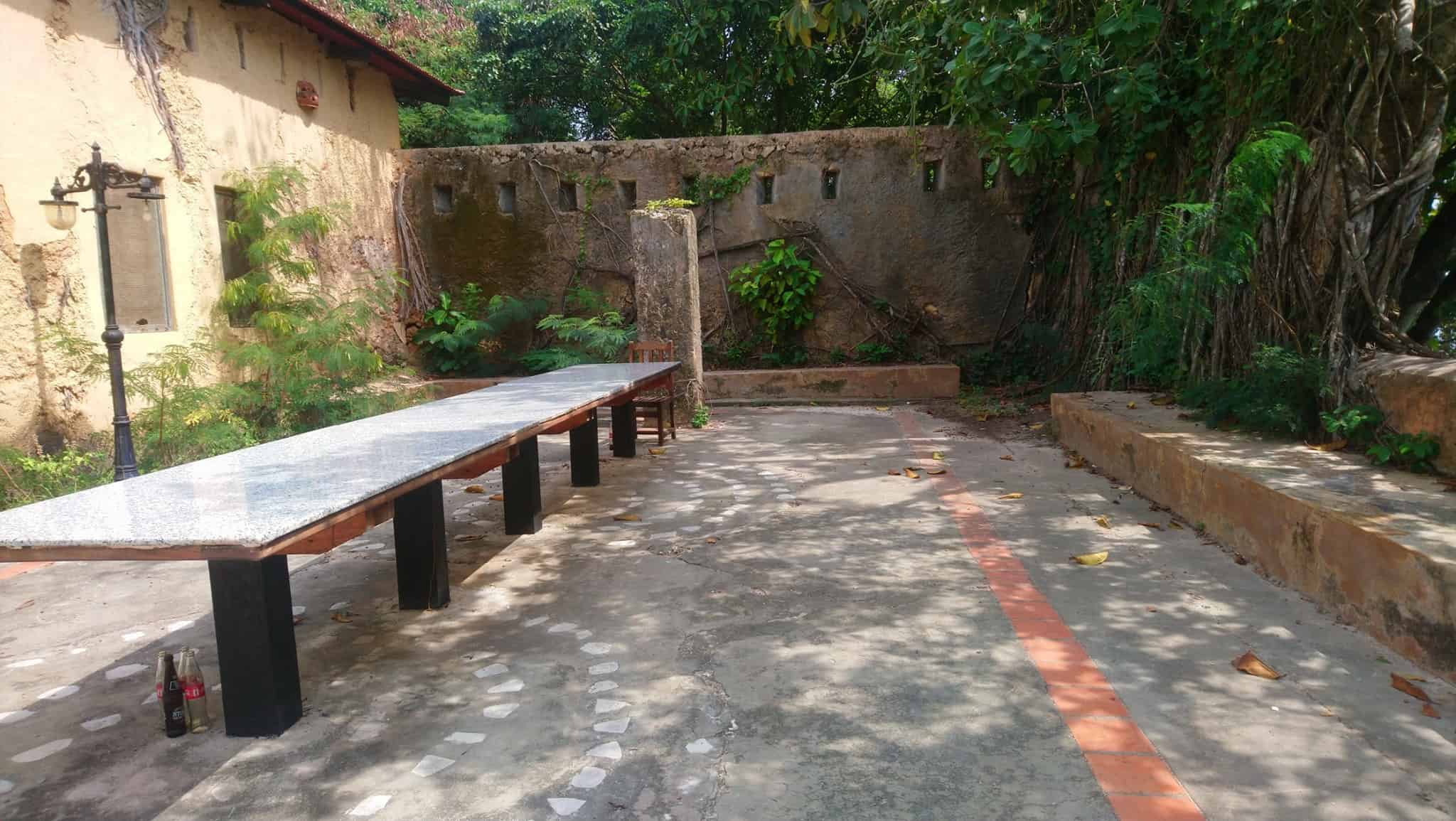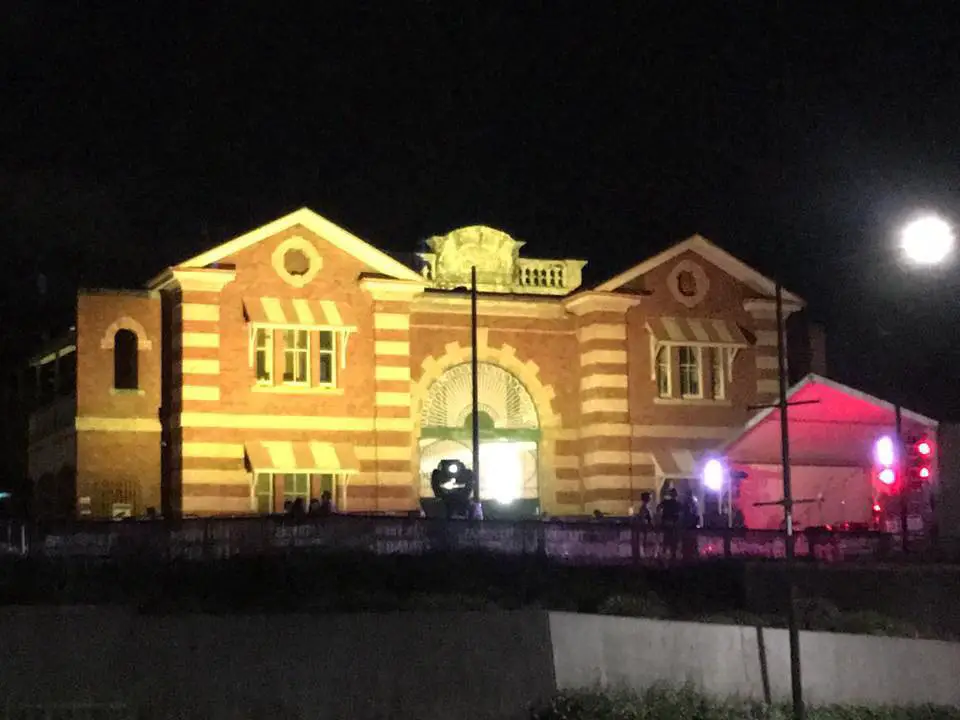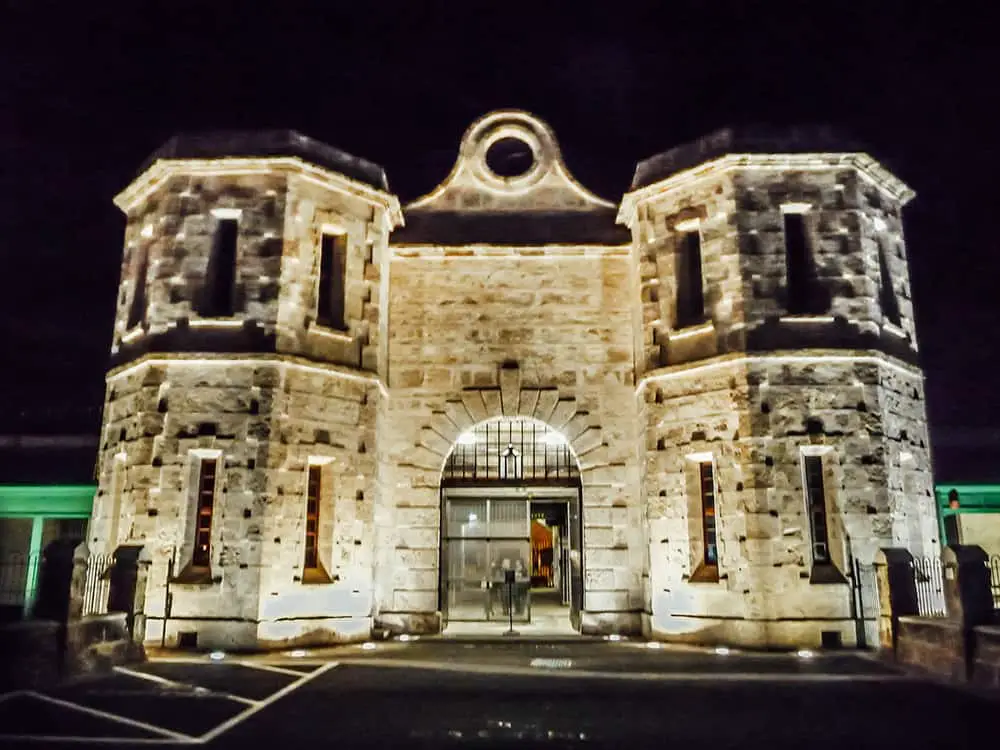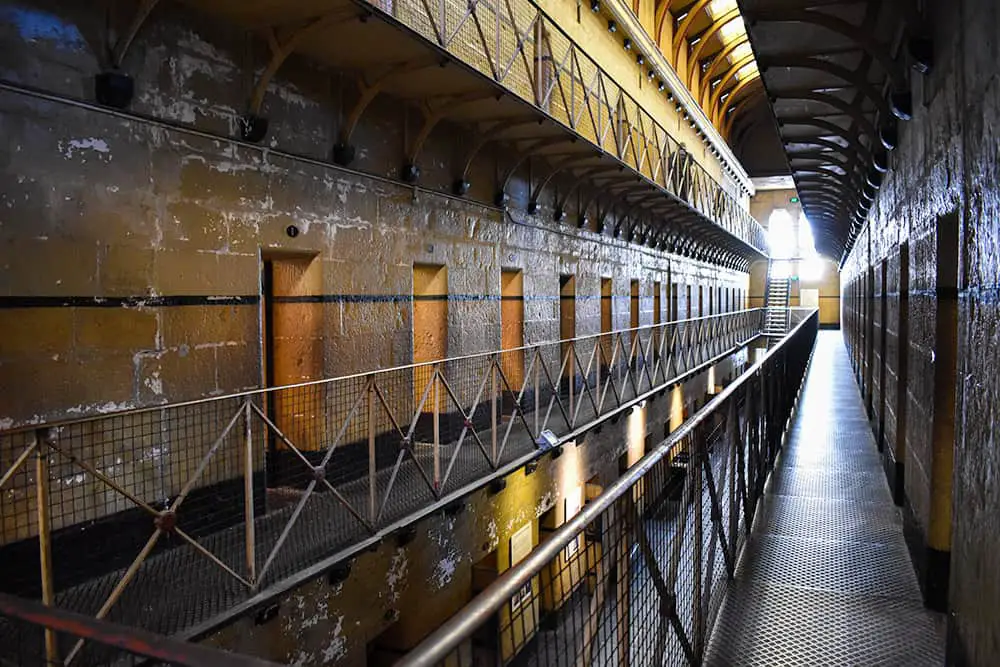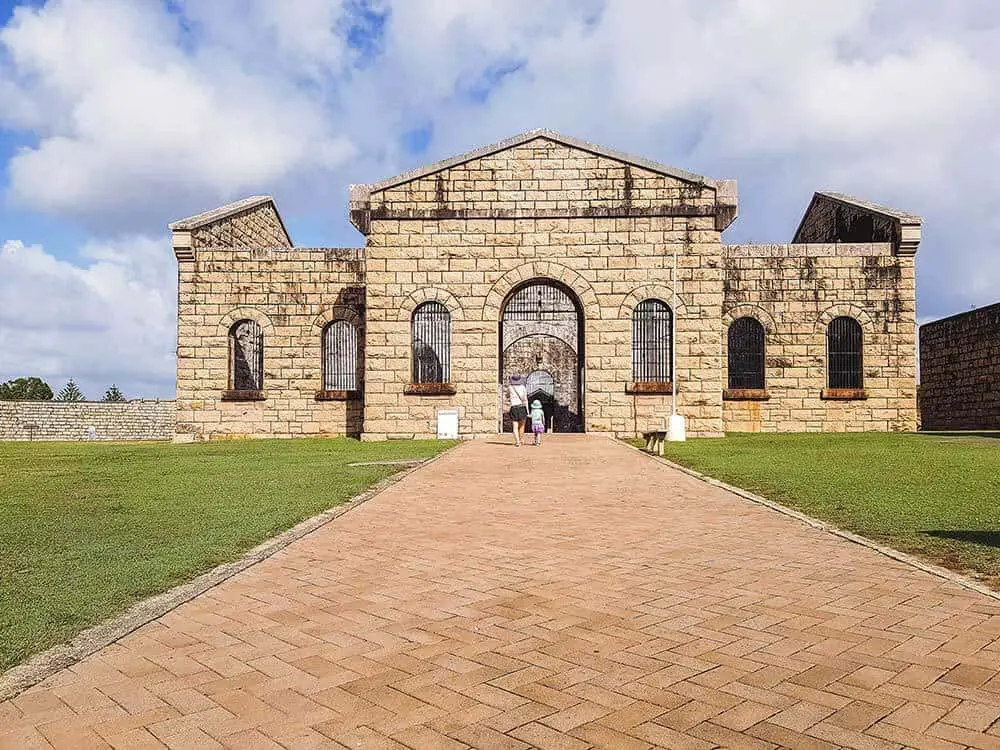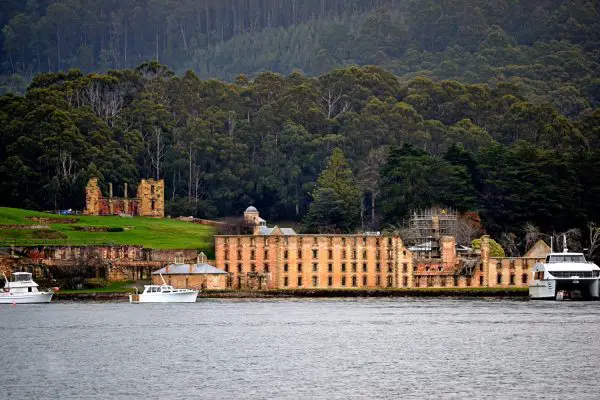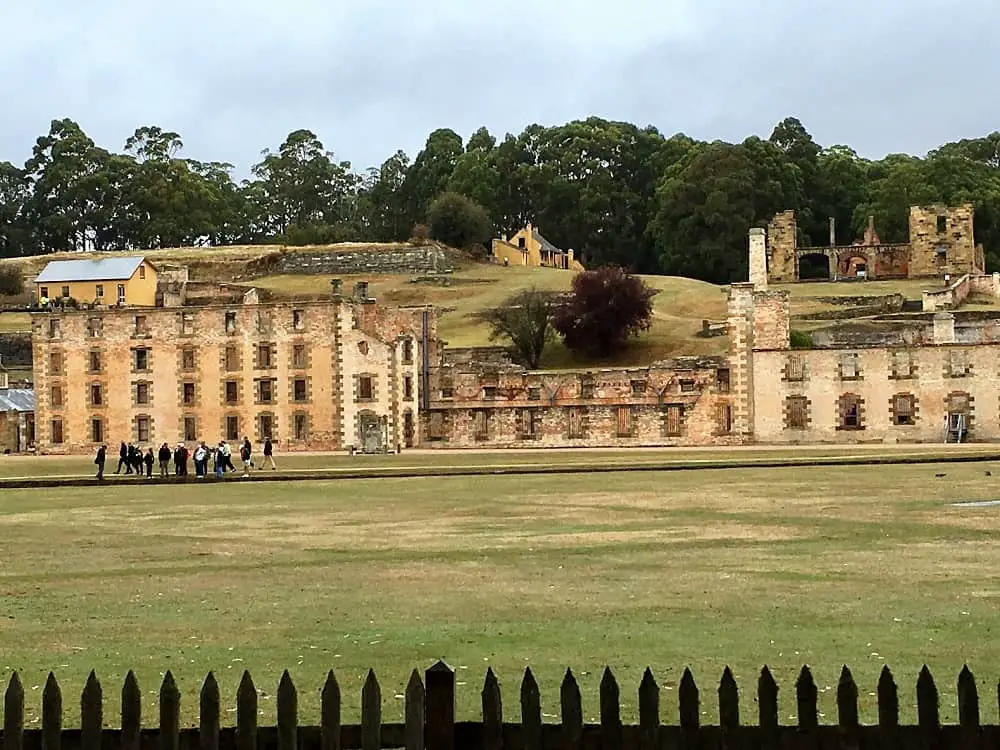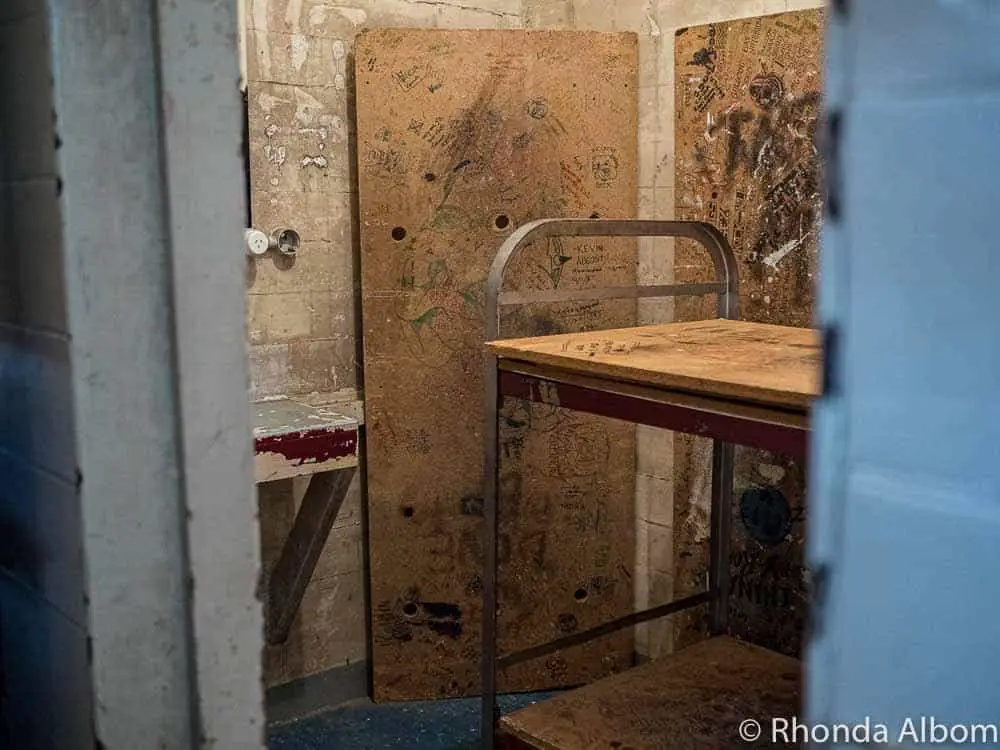“It is said that no one truly knows a nation until one has been inside its jails. A nation should not be judged by how it treats its highest citizens, but its lowest ones.”
-Nelson Mandela
Why would you visit a prison museum? Other than the obvious creep factor, I think Nelson Mandela has the answer. You learn so much about what a society values when you see what it tries to squash whether it’s hiding away the poor in Victorian debtor’s prisons or subjecting political prisoners to enhanced interrogation techniques.
There are a handful of famous prisons in America which have made their way into the international consciousness thanks to the magic of Hollywood from Alcatraz to the Iowa State Penitentiary. Thanks also to the interest in the paranormal, haunted prisons are also famous visitor attractions. In addition to the sensationalist prison museums, you have the historic prisons, prisoner of war camps and prisons for political prisoners.
Check out these prison museums from around the world. Their stories will give you the creeps but they will also make you think about the process of governing.
Contents
Prison Museums of North America
The prison museums of North America tell the story of a continent being settled. You have the wooden prisons of the frontier days as well as the grand architectural masterpieces of later times. At the Eastern State Penitentiary in Philadelphia, the Quakers tried to reform instead of punish their inmates. The whole point of solitary confinement was that you could reflect and do penance for your sins. A laudatory goal that went by the wayside when the pendulum swung back to meting out punishment again.
Kingston Penitentiary in Ontario Canada
There is a fascination with visiting the world’s decommissioned prisons and prison museums. Kingston Penitentiary, located in Kingston, Ontario, Canada is one of those prison museums that offer tours.
Known locally as KP, Kingston Penitentiary opened in 1835 and closed September 30, 2013. In October 2016, public tours at the prison museum started. It isn’t just visitors from out of town that want to visit, but those that live in the area are keen to see just what had been hiding behind those impressive limestone walls.
Up until the time of its closure, because of aging infrastructure, Kingston Penitentiary was one of the world’s oldest prison in continuous use. It has housed some of Canada’s most notorious inmates.
Situated along the bank of beautiful Lake Ontario, it seems ironic that this architecturally significant historic structure could hold such evil.
The old adage of “if the walls could talk”, actually gives one a feeling of unease. Those that have done either of the offered tours can tell you that the guides do not dwell just on the previous residents’ misdeeds but also weave in stories of history. Many of the guides are definitely experts because they are retired Correction Officers who spent upwards of 30 years working at KP. Who better to tell the stories of life behind the walls of Kingston Penitentiary?
– Lori Sweet from Voyage Writers
Old Idaho Penitentiary in Boise Idaho
The Old Idaho Penitentiary is a prison in Boise, Idaho that was opened in 1872 (two years before Idaho became an American territory). It was open for 101 years, and in that time, housed more than 13,000 inmates — including 215 women. Because of the number of people who died there, the penitentiary is considered the most haunted prison in Idaho.
Eastern State Penitentiary in Philadelphia
The Eastern State Penitentiary located in Philadelphia is one of the more famous prisons in America. Closed in 1971, the Penitentiary has been abandoned for more than 20 years. Most of the cells were left as they were unless there was structural instability. You can see the natural course of weathering on the walls and doors of the penitentiary walls. It was a real authentic experience.
No spoilers but the self-guided audio tour is something you must do when visiting Eastern State Penitentiary. The audio tour was incredibly descriptive and very educational. The stories it told painted a vivid image in my head on what it is like to be an inmate or a guard. Some stories were incredibly sad, some were creepy or violent, and some were happy. I was glad they didn’t sugar coat anything and told it as it is.
The audio guide made the penitentiary come to life.
If you are interested in tours, there are free scheduled tours throughout the day that brings you to restricted areas and give you more details and information.
In addition, many people believe that Eastern State Penitentiary is haunted. About 60 paranormal teams explore the site every year, capturing extensive evidence of ghosts within the penitentiary. Events are held regularly throughout the year. A popular event is the Haunted House event during Halloween that is used to raise funds for maintenance of the Penitentiary.
– Sean Lau from LivingoutLau
We had long wanted to visit Eastern State Penitentiary in Philadelphia. Well, I did, anyway, as an avid watcher of every possible ghost hunting show ever produced. Eastern State is widely considered one of the most haunted prisons in America, but, as we discovered, there is much more to appreciate during a visit.
Built in stages between 1822 and 1836, Eastern State’s design and reform practices were revolutionary for the times. Using in a spoke pattern around a central hub, the prison’s “Pennsylvania system” promoted rehabilitation through solitary confinement in individual cells. This was one of the largest public works projects of its time, and the prison was visited by a number of notables, including Charles Dickens and de Tocqueville, in order to observe and report on its reforms.
Designated a National Historic Landmark in 1965, the prison operated for another 6 years before closing in 1971. Today, visitors will marvel at the juxtaposition of ruin and grace in the architectural details of Eastern State, which has been open to visitors since 1994. We especially enjoyed the story of escapee Willie Sutton, a notorious bank robber who tunneled out of the prison with a group of others in 1945, but was captured the same day. Another big draw is the re-created cell of famous gangster, Al Capone, who managed an impressive level of luxury with personal belongings and the cooperation of guards while confined.
Self-guided audio and small group tours with docents, as well as interactive activities and rotating exhibits personalize the visitor experience. And no, we didn’t feel like Eastern State was haunted, although we did make sure to visit in broad daylight!
– Betsey Wuebker from Passing Thru
Hot Springs Dakota Territory Jail
The Hot Springs Dakota Territory jail is the oldest wooden jail in the USA. It was built in 1888 the year before South Dakota became a state. Needless to say the Dakota Territory had its full share of lawless citizens from the Gold Rush prospectors to the migrant labor from the Hell on Wheels towns building the railroads. It is one of the many cool things to do in Hot Springs South Dakota.
Why didn’t prisoners just saw through the lumber? It’s actually sturdier than it looks with wire embedded between the boards. Probably the most famous outlaw held in this jail was Calamity Jane who got drunk and tried to steal a horse in town.
Lynchburg Moore County Jail Museum Tennessee
I thought it would be more people arrested for drunk and disorderly behaviour in the Lynchburg Moore County Jail Museum in Tennessee because the famous Jack Daniels Whiskey distillery is also located in town. The former deputy sheriff who mans the museum though tells me though that they saw plenty of violent criminals back in the day. People went off their head on moonshine and bullets flew.
The historic prison of Lynchburg operated from 1893-1990 when finally a modern jail for Moore County was built. It’s a small building but the fascinating part is that the jailor’s family lived on the premises. The jailor’s wife cooked meals for everyone! There was even a child born in the jail when a pregnant lady got thrown in prison for slapping the sheriff. It’s definitely a peak into small town life and American history.
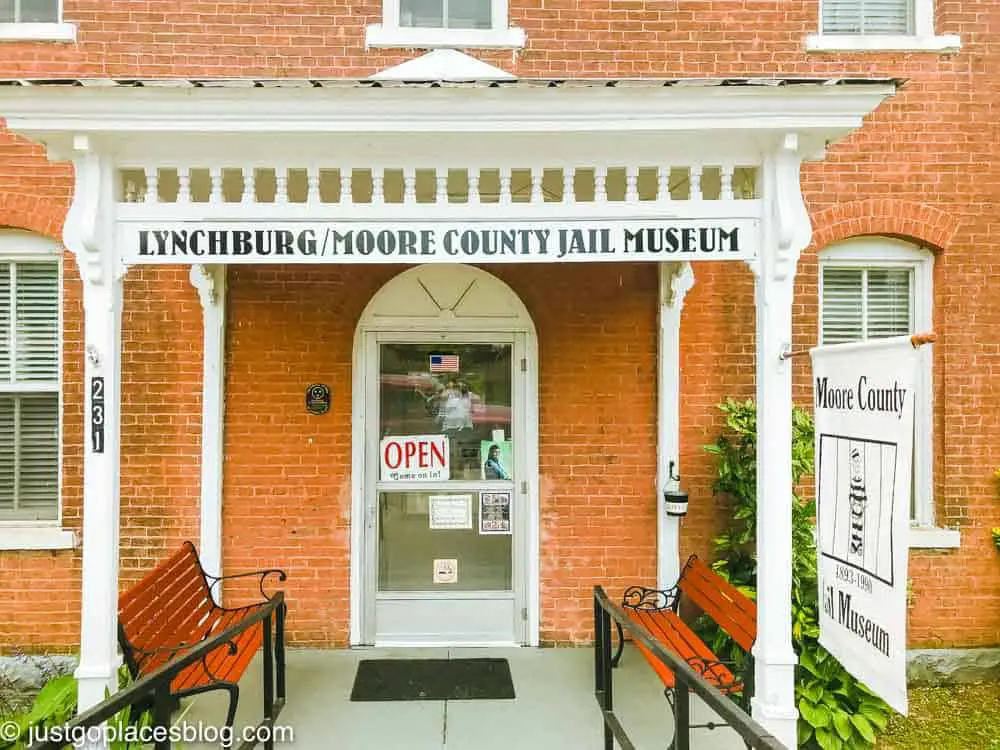
The Lynchburg Moore County Jail is a small town prison museum which shows how jailors and inmates lived together.
Ohio State Reformatory, Mansfield Ohio
The Ohio State Reformatory (also known as the Manfield Reformatory) was operational from 1880 to 1990. It became famous as the setting for the 1994 movie, The Shawshank Redemption. The first inmates helped build the complex putting in the sewer system and the prison walls. The six tier East Cell Block is the largest free standing cell block in the world with 600 cells. It’s also one of the most haunted prisons in the world.
The complex was no longer used as a prison in 1990 when it was shut down for overcrowding. This prison museum is open to the public for tours which helps maintain the building. One of the most famous prisons in America, Ohio State Reformatory offers regular daytime tours as well as night time ghost tours (with minimum age requirements) and one of the cool things to do in Mansfield Ohio.
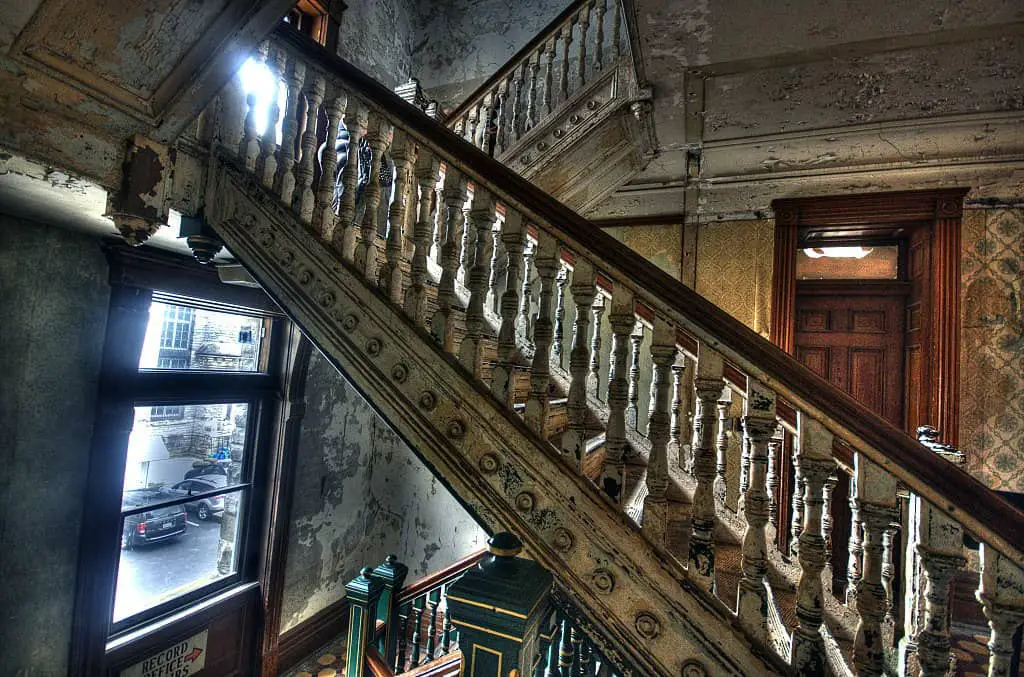
The Ohio State Reformatory which inspired the movie Shawshank Redemption (Image credit: Marianodemiguel [CC BY-SA 4.0 (https://creativecommons.org/licenses/by-sa/4.0)]
The Territorial Prison Yuma Arizona
From the late 1800s to the early 1900s, the Territorial Prison in Yuma Arizona was one of the most infamous prisons in the American Southwest. Constructed on a bluff above the Colorado River, which would flood three months out of the year and turn it into a peninsula, the first seven inmates built their own cells.
It was a place to be feared. Located in the southern-most corner of Arizona, the summer heat was unbearable. Up to five inmates would share a cell, and anyone caught talking could be chained to the floor.
It wasn’t all punishment, however. The prison also had a library with the biggest collection in the territory, and musically-inclined prisoners could join the band.
You can learn about all of this and more with a visit to the Yuma Territorial Prison State Historic Park. In addition to exploring the prison, you can also hike along the river.
– Theresa L. Goodrich at The Local Tourist
Wyoming Frontier Prison
Once you got past the wooden jail cells of rural or small town America, then you got into the large systemic prisons. The Wyoming Frontier Prison was operational from 1901 to 1981 and was home to some of the most notorious criminals in the state. Not only did they execute people with the gallows but they also had a gas chamber. The Wyoming Frontier Prison is considered one fo the most haunted prisons in the USA. We took our kids for a visit and you can read our full review of this infamous prison.
Prison Museums of South America
These two prison museums in South America show the duality of the prison system – People get locked up for crimes as well as for politics.
Prison Museum in Ushuaia, Argentina
Even as you walk through the frigid, eerie cellblocks of the Prison Museum in Ushuaia, Argentina, it’s hard to imagine the conditions prisoners faced as they were confined here.
In the late 1800s, a few dozen prisoners were brought from Buenos Aires to begin laying the stones that would eventually become 380 individual cells. Up to 800 prisoners were squeezed into these cells as more and more prisoners were brought south to Ushuaia. These prisoners ended up not only building the prison, but much of the initial infrastructure in Ushuaia: bridges, streets and public buildings as people settled into the area.
Serial killers, burglars and political prisoners alike were sent to Ushuaia to face the harsh winds and bitter cold that plagued the area. Many prisoners (and guards) perished in the unforgiving conditions.
The prison was eventually closed in 1947. Today, you can tour the echoing hallways and duck into the cold cells, learning stories about some of the prison’s most infamous inmates. Exhibits are in English and Spanish, and there are often special temporary exhibitions about other aspects of life on land and sea in Tierra del Fuego.
In addition to the Prison Museum, the complex is home to the Maritime Museum, Antarctic Museum and the Marine Art Museum, so there’s plenty to keep you occupied for a few hours.
– by Rebecca Arnold of Rebecca and the World
The Paulista Penitentiary Museum, São Paulo, Brazil
“A moving and yet interesting place, the Paulista Penitentiary Museum presents many aspects of inmates’ lives in the most infamous prison of São Paulo.
About ten years after the slaughter that marked the history of Brazil, Carandiru was finally closed and demolished. Gone. Its memories, however, were not.
On the same terrain where once 111 dead bodies were put next to each other – and many others also lost their lives on different occasions – a recreational park and museum were built.
The Paulista Penitentiary Museum, most commonly known as Carandiru Museum, showcases objects, paintings, tools, and even weapons made by inmates.
Tourists can also learn about the history of the penitentiary system in the city and how prisoners lived here. The tattoos exhibition shows how prisoners marked love, crime, and even dreams on their skin.
Among all the beautiful paintings, sad images, and interesting tools, the dark room (aka solitary) stands out. There, visitors can experience how it is to be locked up for a few minutes in a dark 5×5 ft room.
The admission is free of charge, and visitation is only possible during the week.
– Bruna Venturinelli from MapsNBags
Museo de las Memorias, Asunción, Paraguay
The building may not look like much from the outside, but inside it holds many dark secrets from Paraguay’s recent past. Until 1989, the official name of this place was the “National Directorate of Technical Matters”. In reality, though, it was a detention center for political prisoners.
Thousands of innocent people were tortured and imprisoned here under the dictatorship of General Alfredo Stroessner, which lasted from 1954 to 1989. All the signage is in Spanish, but if you ask the staff they will give you an English-language pamphlet with lots of information about the building’s grisly history. Although, the displays of torture instruments and re-enactments of torture techniques inside the prison cells pretty much speak for themselves.
There is no entrance fee to visit the museum, but donations are greatly appreciated. The guardian cum guide, who runs the place almost entirely on his own, informed me that the museum receives very little government funding. Maybe this is to be expected, given that General Stroessner’s political party, called the Colorado Party, is the same party that’s still in power today.
During my visit, I saw a group of local high school students touring the museum. Hopefully, the younger generation will learn from the past so that it will not be repeated. Foreign visitors to Asunción, Paraguay should also take the opportunity to learn about this often overlooked tragedy. In a city that’s short on tourist attractions, a visit to the Museo de las Memorias is likely to be the most memorable thing you do while you’re there.
– Wendy Werneth from the Nomadic Vegan
Prison Museums of Europe
In Europe, the historic prison museums run the gamut from the old medieval prisons to debtor’s prisons. You have historic palaces which were commonly used as prisons such as the Tower of London where political prisoners were kept. More modern prison museums are just as grim. During World War 2, the Nazis were liberal in their use of prisons to control political opponents and promoting religious persecution. The Russians and the Communists likewise clamped down on political dissidents as well as common criminals.
Bodmin Jail in Cornwall, England
Bodmin Jail is considered one of the most haunted places in England and its definitley England’s most haunted prison. Bodmin Jail was operation from 1779 to 1927 and was mostly a debtor’s prison. Cornwall was dirt poor in the 19th century and the poverty and bleakness of life is readkly apparent in the stories of the inmates. Read our full review of Bodmin Jail to know what to expect.
The Clink Prison Museum London, England
London’s Clink Prison was one of the most notorious medieval prisons. The Clink was so widely known that its name became a generic word for prison.
It’s believed that the Clink opened in the 12thcentury, confining prisoners in shocking conditions until 1780. The Clink Prison Museum is close to the site of the original buildings, next to the Palace of the Bishops of Winchester in Southwark, a few minutes’ walk from London Bridge and Borough Market.
It’s a fascinating London prison museum, presented in a series of tableaux with waxwork figures. You descend a flight of stairs from the street,and ring the gaoler’s bell to purchase your ticket.
The tableaux depict a variety of figures from the Clink’s history. One poor starving female prisoner wails and howls, holding out a beggin g bowl, desperate for food. An imprisoned heretic looks up at his tiny cell window, not knowing if he would ever be granted his freedom again. One of the last scenes shows an enterprising prisoner who caught and bred rats for their meat. The full horror of medieval prisons is presented for you.
Other exhibits show some of the instruments used to torture prisoners during the Middle Ages. The descriptions are positively nausea-inducing. This and the conditions in which some of the prisoners lived made it a dreaded hell-hole. Those in the lower cells would be flooded every time the tide came in, with all the faeces and detritus that polluted the Thames at the time washing into their cells. Then you go outside and have your photo taken in prison garb.
It’s well worth an hour of your time, but it’s an odd mix between cartoon grotesquery and some pretty harrowing descriptions.
– David Angel from Delve Into Europe
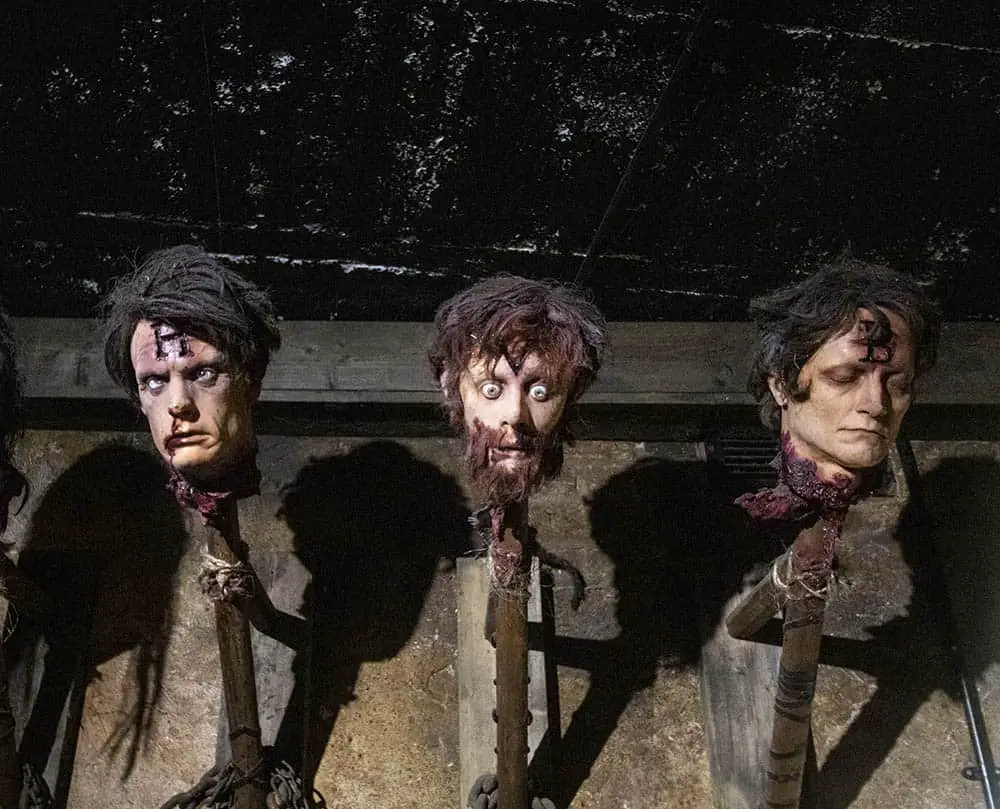
Waxworks of branded prisoners’ heads at the Clink Prison Museum, a London prison museum which was the inspirations for the dreaded Azkaban Prison in Harry Potter (Image credit: David Angel)
The Tower of London in London, England
Soon after William the Conqueror defeated King Harold II at the Battle of Hastings in 1066 AD, he began building what is known today as the White Tower, or the Tower of London. When you see it today amongst the modern skyscrapers, it may not seem all that large or impressive. But in 1078, when it was completed, it dominated the landscape and was quite formidable.
The Tower of London and its surrounding wall and moat housed not only the king’s quarters but also a state prison. This is where those who crossed the king were kept — almost as if the king wanted to keep his enemies close so he could best control their fate.
Many terrible and famous executions occurred at the Tower of London including that of Anne Boleyn, Lady Jane Grey and Sir Thomas Moore — all in the name of greed or selfishness of those in power.
During a Tower of London tour, you’ll learn exactly what execution day was like for a prisoner. He (or she) was led from his cell and put in a cart to be taken up to Tower Hill where the execution would take place. The prisoner was offered a mug of ale before passing through the gates. This is where the term “one for the road” comes from.
After passing through the gate, the prisoner was handed over to the sheriff of London whose job it was to oversee the execution. When the cart arrived at Tower Hill, there were often hundreds of spectators jeering. If you were sympathetic to the prisoner you dared not show it, as you might have been named a traitor to the king.
The prisoner was introduced to his executioner and may have offered a few coins or even gold nuggets to ensure the cleanest chop possible. The prisoner was allowed to say a prayer, then knelt before the block and laid his head upon it. After his head was removed, the body of the corpse was put back on the cart and buried inside the walls of the Tower of London. The head was held by the hair for all to see, then placed on a spike at the city entrance to warn would-be traitors to the king.
– Tami Wilcox at Postcards & Passports
KGB Prison Cells – Tallinn, Estonia
A walk down the medieval cobblestoned lanes of the Old Town in Tallinn, Estonia conjure images of romantic fairy tales and Robin Hood-esque fables. With its beautiful Art Nouveau architecture, it’s difficult to fathom that this was a country who suffered and struggled against a communist regime. The intricate facades are some of the last surviving witnesses to tell the stories of thousands of displaced Estonians. The most notorious place for these crimes against humanity took place in the basement of the building at 1 Pagari Street, which holds the stories of a darker period in the country’s history.
The former KGB headquarters remains a symbol of Soviet-era occupation and oppression. The prison cells were established in the cellar of the building in 1941. Here, arrested Estonian politicians, civil servants and suspected enemies were interrogated and tortured. The fate of these innocent civilians was either death or imprisonment in labour camps in Siberia. The basement windows were bricked-up to block the daylight and to mute the horrific sounds of violated and tortured prisoners.
The small prison museum opened to the public in July 2017. Comprising two corridors, six prison cells and a punishment cell, visitors view black and white photographs of scenes from this period of terror. A small selection of diaries and video recordings of survivors are also on hand. In the last room, visitors are invited to notate their response to the question “Which Freedom Is Most Important To You?”. This simple yet poignant question encourages reflection, the responses attached to the chalkboard revealing a range of interpretations from all walks of life.
– Jasmine from The Travel Quandary
Paterei Prison, Tallinn Estonia
Patarei prison at the outskirts of Tallinn, Estonia, is a place of many stories and countless sad destinies. The Communist regime of the Soviet Union in Estonia between 1940-1941 and 1944-1991 imprisoned people based on their political views to this old sea fortress initially built 1840 by the Russian Tsar, Nikolai I.
This place was in active use as a prison until 2002, after which it was a prison hospital for a few years before being abandoned in 2004. Patarei has stood there ever since, like the time itself would have stopped inside its walls. There are still dead plants on the cells’ tables, decaying bed cloths and eerie rooms one after another.
Most notably, when you step inside the thick, stone walls, you can feel an intense atmosphere. Whether it’s sad, depressive, obsessive, or something else depends on the people. Everybody seems to have a bit different, personal experience inside the Patarei.
Only a part of this enormous fortress is open to the public again. For some time, the whole prison was closed, but it’s now reopened to the visitors. Some of the most horrible rooms, but engaging in their own way, are maybe the surgery room and the execution room. When you’re there alone, you may suddenly feel that you’re not alone after all.
The abandoned Patarei prison is, as you may have already guessed, also haunted. Many ghost hunting groups have done researches there with different results, and many visitors and guides alike have had personal experiences of something unexplainable. However, whether you believe in ghosts or not, Patarei is worth a visit. It gives you a truthful and historically honest retrospect of the Soviet era of this part of the world.
– Piritta Paija from Bizarre Globe Hopper
Patarei Prison (Patarei Vangla) is one of Tallinn, Estonia’s newest attractions. It was a sea fortress originally constructed for Russian defense in 1840, but is better thought of a Soviet prison. If you were an enemy of the communist ideology during the decades of Soviet occupation of Estonia, you may have interrogated, tortured, or even executed here.
You can thank the seaside location for the authentic, deteriorating look of the 1,200 square meter exhibition space as it appears today. The signage emphasizes who the prisoners were, the inhumane conditions, and the realities of life for the many prisoners locked up. It’s one of the largest and best preserved military structures in Europe, though the current focus is on the place as a old prison museum. You’ll have to look hard to see the fortress elements as a result.
Used to house prisoners until 2004, the place was essentially abandoned until quite recently (the exhibit currently on display only opened to the public in May 2019, and (as of publication) is only open during the summer months (May to October). It’s the first element of what will become the International Museum for the Victims of Communism — a reminder of just how far Estonia has come in a generation’s time.
It’s fairly close to the Lennusdam Seaplane Harbor, and you’ll probably see the signs for it if walking along Kalaranna road north of the Old Town. Recommended for mature audiences only, but no graphic displays around.
– Chris Backe from Worthy Go
The Conciergerie in Paris, France
La Conciergerie in Palais de La Cité (13th century) was the former royal palace of the Kings of France before the construction of the Louvre Palace. It is located by the Seine River, in Ile de la Cité, in the heart of Paris.
La Conciergerie has an interesting gothic architecture and visitors still can see some of the main halls such as the beautiful Salle des Gens built under King Philippe Le Bel or the huge kitchens. When the Kings moved to the Louvre, in the 14th century, the building changed its use and it became the Law’s Court. It was then when part of the palace was converted into prison cells to host the most dangerous men against the crown.
The Conciergerie had an important role during the French Revolution. During this period the Conciergerie became one of the principal places of detention, with the installation of the Revolutionary Court. It was in the Conciergerie where Queen Marie-Antoinette and her sister in law, Madame Elisabeth, were held before being sent to the guillotine. Indeed, the King’s absolute power and his luxurious life in Versailles Palace were too much for the French people.
Today, visitors can still see Marie-Antoinette cell. It is a simple chamber decorated with puppets in costume dresses so visitors can get an idea of Marie Antoinette’s last days before the guillotine.
– Elisa from World in Paris
Nazi Documentation Center in Cologne, Germany
In the heart of Cologne, Germany surrounded by hotels and office buildings is a museum with a dark history. The Nazi Documentation Center was once a Gestapo prison where over 400 people were execute by hanging in the courtyard. Hundreds more were held and interrogated
and tortured. Eventually they were either released or transferred to concentration camps. The cells have been left almost completely intact and today you can see how prisoners spent their days in this place.
Many of the prisoners held left inscriptions on the walls of the cells. Historians uncovered and preserved anything from love letters to stories, drawings and records of how long prisoners were held.
Prisoners came from all over Europe so the inscriptions were written in several different languages.
Many of the hallways feature photos of these inscriptions and stories of the prisoners held there. They also have most of the doors to thecells open. You may not be able to go inside but you can see a good
number of drawings and writings from the doorway since the cells were quite small. The main and lower level exhibit is in German as well as English. The upper level exhibit currently features propaganda used
against the Jews and is in German. They don’t have any English on this upper level but they do offer audio guides when you enter.
– Samantha Lorenz from Have Seat Will Travel
Stadhaus, Hamburg Germany
The citizens of Hamburg didn’t actually know what to do with Stadhaus in Hamburg for a long time. The Stadhaus you see was the head of the Nazi police state from 1933-1943. It housed the Hamburg Police, the Gestapo and other police functionaries of the state. In the building’s cells, thousands of prisoners were tortured and many died. The police kept surveillance over the city and over the forced transportation of people to the Nazi prisoners camps.
This complex would have been another one of the many abandoned prisons in the world except for the fact that it occupies prime real estate in Hamburg. And it’s a beautiful building. Now there are plaques attesting to the atrocities committed in the complex as well as a boutique hotel, book store, and other high end stores and restaurants. It’s prison tourism but not as you know it.
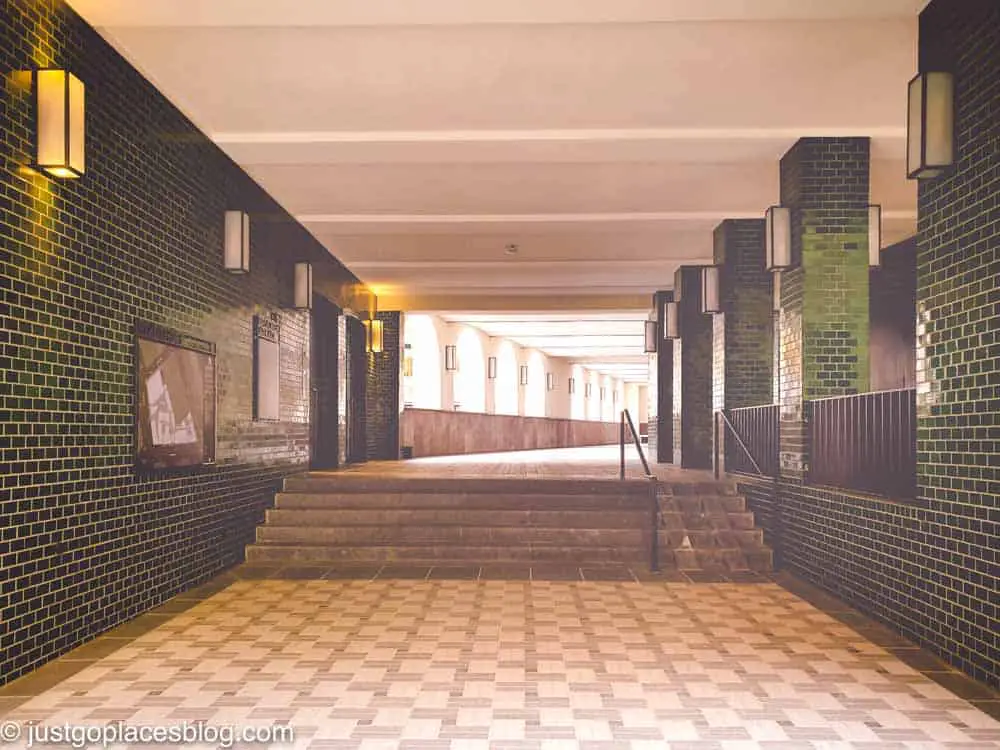
Corridor in the Stadthaus Hamburg complex of buildings which used to be the Nazi police HQ in the city
Heidelberg University Student Prison in Germany
Located at the back of the Old University in Augustinergasse, the Studentenkarzer (Students’ Prison) is one of the top sights in Heidelberg, Germany. In our modern days, misbehaving students are often given detention or extra home work, but back in the 19th century, unruly students at Heidelberg University were banished to an unusual place: the on-campus jail. Although the Student Jail was an official jail, it wasn’t as strict as a regular one for criminals. Depending on your misdemeanour, you could land a sentence from anything from 24 hours to 4 weeks. The most common offences? The disturbances of peace, especially after excessive drinking at night, insulting official authorities or playing jokes at them as well as participating in duels.
Life and conditions inside the student jail weren’t exactly strict. Students were provided spacious cells with proper beds and writing desks so they could continue with their studies. For most students, a stay at the prison was a rite of passage, and over time students often graffitied their names and frat house symbols into the walls. In the prison’s later years, students were even permitted visitors to their cell, which inevitably became an open invitation to turn the student prison into some kind of party house.
After closing in 1914, the studentenkarzer has been preserved, and the student’s “artwork” Their “artwork” and graffiti is now open to the public.
– Samantha Hussey Barbagallo from The Wandering Wanderluster
Kilmainham Gaol in Dublin, Ireland
Kilmainham Gaol in Dublin, Ireland, now an old prison museum, functioned as a prison from 1796 to 1924. It is a very important monument and symbol of the struggle for Irish independence, but also as a symbol of the Irish civil war.
At first the gaol was home to political prisoners, debtors, beggars, prostitutes, and drunks. Woman and children were housed with the general population.
In 1862 the east wing was opened. Light and airy, it was seen as the ideal for prisons in the Victorian age. Silence and separation were seen as key aspects of rehabilitation; each prisoner had their own cell and no speaking was allowed.
The prison was closed in 1910 but was reopened after the Easter uprising of 1916 to house hundreds of political prisoners. 14 men were executed by firing squad in the yard. The rest were released under a general amnesty in 1917.
The mood of the country had changed after the Easter uprising and in 1918 Sinn Fein, the radical republican party, won a landslide victory and set up their own parliament, the Dáil, instead of joining the British Parliament.
The Dáil’s military branch, the Irish Republican Army, fought the British forces and Kilmainham Gaol was used to hold captured IRA members. The War of Independence ended with a truce in July 1921.
Bitter disagreement occurred within Sinn Fein over whether to accept the treaty that split the island into a 6 county Northern Ireland and 26 county Irish Free State because it required an oath of allegiance to the British Monarch. In June 1922 this boiled over into civil war.
The Free State, or pro-treaty side, took over Kilmainham Gaol, and of 77 Republicans to be executed, the first four were shot in practically the same place as the leaders of the 1916 Easter uprising. The last prisoner to be released in 1924 eventually become Prime Minister.
Restoration began in 1960 and in 1986 Kilmainham Gaol was given over to the state as a monument of Irish Nationalism. The tour is rich in the history of Ireland and individuals.
– Theresa Ladner from Adventures in Middle Aged Travel
City Gaol Cork, Ireland
One of Cork’s leading attractions is now the Cork City Gaol turned prison museum. So if you want to do something different in Cork, this place is a must.
The Cork City Gaol was built in 1820s and used to be the city’s home for lawless citizens until it was closed in 1923. From 1927, the gaol was reopened and became the broadcasting station of 6CK – the first radio station in Cork. It was later succeeded by Radio Eireann until it was closed down again in the 1950s. The Cork City Gaol Museum reopened in 1993 as a museum.
The Cork City Gaol was known for its harsh environment and tough penalty even for small crimes. And this was mostly the theme of the audio tour in the museum. When you enter the Cork City Gaol Museum, it will give you a peak of the life of the prisoners in 19th century and the tough living conditions through the wax statues and the audio tour provides background on the history of the place as well. It was tough to hear that extremely poor people who had to steal a loaf of bread had to endure hard labor and abuse just to pay for their mistakes.
The Cork City Gaol Museum also has a picnic area for families who want to stay after the tour, a souvenir shop for those who want to take home pieces of the prison’s history, and a cafe for those who want to take a break.
– Christine Rogador from Ireland Travel Guides
Crumlin Road Gaol Belfast, Northern Ireland
Up until the 90s, Belfast’s city prison, Crumlin Road Gaol functioned as a place for incarnation, just! It closed its doors as it could no longer meet EU regulations.
Up until then ‘The Crum’ jailed men and women for 150 years. This Belfast tour discusses some of the historical practices used such as flogging (whipping) and the imprisonment of children.
Dark tourism visitors will find one room in particular of interest, the capital punishment part of the prison.
More modernly, guides discuss the impact The Troubles had on the prison system and a bombing which took place in one of the wings! Team up the visit with a Belfast tour* in a Black Cab to get a deeper understanding of The Troubles.
Interestingly, some members of the public who were prisoners have returned for a tour of the prison so you never know who is in your group.
– Gemma Armit from Two Scots Abroad
Palazzo d’Avalos- Island of Procida, Italy
When I think about ex prisons around the world, I always seem to imagine some sort of fictitious fortress like that of the Chateau d’If made famous by the novel The Count of Monte Cristo. Maybe it’s the appeal of it being on an island completely secluded from the rest of society, or perhaps it’s the fantastic legends and attempts of escape… whatever the case, when I found out there was a prison museum on the island of Procida, I just had to go.
The smallest of the islands in the Gulf of Naples (Italy), Procida is just a gem dotted with pastel buildings and local fishermen waiting to tell you a story or two. The island is brimming with history which is why the visit to Palazzo d’Avalos was so fascinating. Previously a Bourbon royal palace, the entire estate was converted into a male maximum-security prison in 1830. As you wander around you can catch glimpses of the previous luxurious Bourbon architecture – the juxtaposition of high vaulted ceilings alongside shackles and devices of torture makes the experience all the more eerie.
The inmates were usually political prisoners and were subject to some of the cruelest forms of isolation punishment. At any given time, there were about 700 inmates forced to work either as tailors, carpenters, or if lucky, farmers. From the cell windows you can just imagine what the prisoners would think of as they would stare at the surrounding blue sea. A longing to be free, knowing that those beautiful waters that they so idolized were also the reason that they could never truly escape- destined to die in the cells of that very island.
The tour is two hours, costs 10 euros and is only possible upon reservation. You get a very detailed history lesson and also a spectacular view of the entire island from the roof of the palace- hands down one of my favorite things I did on the island- do it!
– Linda Faison of La Dolce Fit Vita
Doge’s Palace, Venice Italy
One of the great things to do in Venice with kids is to visit Doge’s Palace, a palace built in Venetian Gothic style that dates back to the 14th century. Doge’s Palace is located on a prime piece of real estate on the Grand Canal, next to St. Mark’s Basilica and the famous St. Mark’s Square, Its rooms were designed to serve as the Doge’s private apartment and also institutional chambers where legislators met, and each of its rooms seems to be more opulent than the last.
Unlike any palace we’ve ever visited, it also houses a prison. After completing our tour of the Palace rooms, we crossed the 17th century Bridge of Sighs into the New Prisons. The Bridge connects the interrogation rooms to the dark prison. Convicted prisoners had their last view of Venice from the small holes in the side of the bridge. The bare prison cells starkly contrasted the luxurious Palace, and we felt much more solemn when touring the New Prisons. The close connection between Palace and prison was quite the dichotomy, and it’s no surprise that the beautiful Bridge of Sighs has become so famous. It was certainly a relief to cross back to the Palace to finish our tour.
– Catherine D’Cruz from We Go With Kids
Auschwitz- Birkenau Poland
Auschwitz Birkenau is a museum complex that commemorates the victims of the biggest concentration camp operated by the Nazi Germany in occupied Poland during the Second World War. Auschwitz was in fact a complex of over 40 concentration and extermination camps in which at least 1.1 million people died during the 5 years in which it operated.
It is hard to describe how it feels to visit Auschwitz because walking around the same grounds on which genocide happened not even a century ago seems so surreal. Maybe it’s because there is not much left. The barracks once overfilled with prisoners from Auschwitz have been transformed into exhibition halls. However, the photos of the prisoners from the hallways are almost haunting and you can’t not stop at least for a moment and read a few names. What is shocking is that most of them died a few weeks after they have been brought to Auschwitz.
Birkenau, the largest concentration camp, where most of the people were sent to death as soon as they deboarded the trains, is now an almost empty field, with only stone chimneys reminding of how many wooden barracks used to lay on the empty soil. A reconstructed buildings shows today the conditions in which prisoners used to live in the camp: triple wooden beds in which people used to squeeze at least 10 per bed, hungry rats eating human flesh, non-insulated wood walls and no heating, no matter if outside were -20 degrees. The building looks like a stable…
Probably the most shocking place that you can see at Auschwitz is one of the gas chambers, inside which the walls still bear the marks left by the prisoner’s nails, trying to raise themselves for a last gasp of air….
– Joanna Davis from The World In My Pocket
Pawiak Prison – Warsaw, Poland
The Pawiak Prison in Warsaw was first opened in 1835. Initially under Czarist rule, the prison was used as the principal prison within Poland to house criminals, as well as political prisoners.
Although Pawiak has played an important role throughout Polish history since it was established, the prison is now predominantly known for its role during WWII. From 1939, under Nazi control, the prison was used as a Gestapo prison.
Throughout WWII, over 100,000 prisoners went through Pawiak, and over 37,000 of them died within its walls, most were classified as political prisoners. Conditions within the prison were horrendous, and torture was common, particularly to obtain information on the Polish resistance. Though some of those who died at Pawiak were executed, many died under duress during torture.
In 1943, during the Warsaw Ghetto Uprising Pawiak Prison became an assault base for the Nazis. Some of the prison guards then volunteered to hunt down and murder all the remaining Warsaw Jews.
The prison was destroyed on 22 August 1944 when the Germans blew up large portions of the city. Though it was not rebuilt after the war, part of the former prison was restored to install a museum within.
The Pawiak Prison is now one of the important memorial museums in Warsaw, which educates visitors on the atrocities of WWII. Not all of the information available at the museum is in English, but we still thought it was an important part of history that needs to be visited and remembered. Depending on the time of year, it’s quite popular with school groups. So as many of the museum rooms are former cells – which are small – you may have to be patient to see some of the exhibits.
– Jeremy Paterson from Cultura Obscura
Sighetu Marmatiei in Romania
The prison in Sighetu Marmatiei, a town in North of Transylvania, was built in 1897 and used as a civil prison for many years. Its purpose was changed in the 40s with the coming of communism in Romania.
Romania had a period of around 40 years of communism. When communism was installed, all those that protested against this regime have suffered and some of them were jailed, dying in prison. The prison in Sighet was used to incarcerate the political prisoners (intellectuals, priests etc) and to torture them for almost 10 years. After that, the building became a civil prison and warehouse. In 1993 it was transformed to a prison museum: Memorial of the victims of communism and resistance or Pain Memorial.
The former prison collects documents and testimonies about what the communist regime meant in Romania and how it all started. You can see here the history of communism in Romania and what happened to those that fought against it. You can visit the prisoners cells, see the gallery of political prisoners, their clothes and the way they lived here. In the back yard the monument “Sacrifice Court” was erected as a tribute to those that fought against the system. Two hours are enough to explore it, but it will leave you with a strong impression.
From the entrance the place reminds of Auschwitz and the similarities appear during the whole visit. And the same quote written on a wall in Auschwitz “Those who do not know history are doomed to repeat it” George Santayana is written in the first chamber of Memorial of the Communism victims in Sighetu Marmatiei.
– Corina Preda from Another Milestone
Trubetskoy Bastion of the Peter and Paul Fortress, St. Petersburg, Russia
Peter and Paul Fortress is the core of St. Petersburg, Russia. The fortress was founded in 1703 by Russian emperor Peter The Great. There are many monuments and museums inside Peter and Paul Fortress: the Mint, Peter and Paul Cathedral, historical museums with collections of old furniture and ceramics, etc.
But there’s also one of the most sombre places of St. Petersburg — Trubetskoy Bastion. It’s a former prison which nowadays is a museum.
For many years Trubetskoy Bastion was the main political prison of Tsarist Russia. Almost 1500 prisoners were detained there: members of revolutionary organizations, ministers, soldiers, writers… They all were considered by the secret police as of the enemies of the state.
Trubetskoy Bastion is a 2-storey building with 69 single cells, 2 punishment cells, a chapel, a library and a kitchen. There’s also a prison banya (bathhouse) in the courtyard. All those places are open for visiting. The exposition also includes archival documents, photographs and records with prisoners’ memoirs. Next to every cell, there’s a signboard with photographs and biographies of prisoners who were held in the cell.
Trubetskoy Bastion was known for its harsh regime of solitary confinement. Communication between prisoners and between prisoners and the guard was strictly forbidden. Detention in the prison was real psychological torture. As you visit the cells, you realize how hard the conditions were. Cold, isolated, dark cells impress by their grim atmosphere.
– Anna de Nord from Travel to Russia • Travel Cultura
Peterhead Prison Museum
For many years Scotland’s top tourist sites have included castles, whisky distilleries and iconic landscapes. However, in 2016 one of the most famous former prisons in the country opened its doors to the public. It is now rated as one of Scotland’s best visitor attractions.
Peterhead Prison Museum can be found on the Aberdeenshire coast and some call it Scotland’s Alcatraz. Originally opened in 1888, HMP Peterhead was closed in 2013. During its history it was home to some of the most infamous prisoners in the UK including serial killers, child murderers and gangland figures. Visitors can now explore the inside of this tough prison on an excellent audio tour. Many areas are open to the public including a cell block, laundry room, shower block, suicide wing and solitary confinement cells. As each visitor has a personal headset, everyone can explore at their own pace.
Jackie Stuart is just one of the former prison officers that now works at the museum and narrates on the audio tour. Stuart was taken hostage and tortured for 5 days before being rescued by the SAS when they stormed the building.
The atmospheric audio tour and museum props really help to capture how dark life could be for both the prisoners and guards in this grim place.
– Susanne Arbuckle from Adventures Around Scotland
Prison Museums of Asia
In Asia, the selection of prison museums seems to be more historic prisons for political prisoners from the American POW’s of the Vietnam War at the Hanoi Hilton to the intelligentsia cleansing of the Pol Pot regime in Cambodia.
Heritage Jail Museum India
Heritage Jail Museum is known as Jail Museum and Sangareddy District Jail is a 220 years old jail, now converted into a museum.
The nearest airport is Hyderabad international airport. From there Sangareddy is 65 km you can use public transport or hire a taxi to reach.
For just Rs 500 now you can have the full jail tour experience and live like a prisoner in this jail. They let you stay in a rectangular cell, cut off from the rest of the world. The room has one door, two windows, an Indian style toilet and a bucket. A guard will be posted next to the door. They also give a mosquito net. The food is also like the food provided in jails for an authentic jail tour experience. There is no prison work involved but you can plant tree saplings.
The jail was constructed in 1796 A.D. The prison is spread across 3 acres. The heritage jail has two wings, male and female. There are nine barracks in male wing and one in female wing. The jail used to have 90 male prisoners and 5 female prisoners.
– Shalini Garnaik from Eager2Travel
Aga Khan Palace – Pune, India
When Sultan Muhammed Shah Aga Khan III built this palace in 1892, he never thought it to be used as a prison or that it would play an important role in India’s freedom movement. But this building served as a detention center for Mahatma Gandhi along with his wife Kasturba and his secretary Mahadev Desai from 1942 to 1944.
During the period of detention, Kasturba Gandhi and Mahadev Desai died here leading to a heartbroken Mahatma Gandhi. Both of their memorials have been built inside the palace gardens. When Mahatma Gandhi dies, his final wish was to bury his ashes along with his wife and hence, a part of his ashes is also entombed nearby.
Aga Khan Palace also enthralls its visitors with its beautiful expansive lawns and Italian designed halls.
In 1969, Aga Khan IV donated the palace to the Indian Government after which it was converted into a museum dedicated to showcasing the life and teachings of Mahatma Gandhi through a series of photograph and artifacts. Till this day, it serves as the headquarters of the Gandhi National Memorial Society and has become a prominent tourist spot in Pune.
– Anwesha Guha from Going Places With Anwesha
S21 Prison in Cambodia
One of the popular museums in Cambodia is the S21 Prison which is located in Phnom Penh. S21 stands for Security Prison and is also known as the Tuol Sleng Genocide museum. It was established by the Khmer regimen during their rise to power in 1975. It is frequently included as part as of the tours that head to the Killing Fields.
I found the experience of visiting the museum rather intimidating and emotional. For one thing, the prison was set up in a school. You can look around and see where the kids probably ran and played. On the other hand you walk into the classrooms and you see a different scene. Small enclosed spaces where people were imprisoned in rather inhumane conditions. Barbed wire in the corridor windows was put in place to prevent the prisoners from jumping and committing suicide.
A display has been put up of the names of the people who lost their lives in the prison. Not all of the people however have been identified. A lot of the people come here in hope that they can find clues about their lost relatives. It is a rather emotional experience.
– Penny Fernandes from Globe Trove
If you visit Cambodia, you will feel the presence of history all around you since you land at the airport. The country was indeed ruled not so long ago by one of the cruelest dictatorships that the world ever witnessed. The Khmer Rouge took power in April 1975 and their ferocious regime lasted until January 1979, when the Vietnamese invaded the country and freed Phnom Penh. In less than four years, approximately one third of the population died, both killed by the authorities or starved to death and by fatigue in the labour camps created all around the country.
The symbol of the atrocities committed by the Khmer Rouge is the prison of Tuol Sleng, which during the regime was known as S-21. Approximately 20’000 people have been imprisoned in these buildings that were a school before 1975. Only twelve survived.
Nowadays Tuol Sleng hosts the Genocide Museum, in memory of all the people who died under the regime. The cells have been left as real as possible, while photos and texts try to raise awareness of what happened in the prison. One of the survivors is still alive and spends his days in Tuol Sleng, signing his book and speaking to the visitors. Explaining what happened at S-21 has become his mission so that everybody can really understand the atrocities that the Cambodian people suffered under the Khmer Rouge.
– Mario Migliore at Rest and Recuperation
Seodaemun Prison Hall, Seoul, Korea
The Seodaemun Prison Hall is a prison museum located outside the historic centre of Seoul and was built at the start of the Japanese occupation in 1910. In the last decade and still up and till now Korea and Japan have a very difficult relationship. One of the main reasons for this is because of the Japanese occupation and the cruel acts that were performed on Koreans in the country and especially in the many prisons. The biggest prison used at that time was Seodaemun Prison which was used by the Japanese to lock up, torture and execute Korean freedom fighters.
Now the prison is turned into a museum to remember the death of the independence fighters. The grounds itself are quite big for being located in the city and contain the main men’s prison with 3 different cell rows, a tiny women’s prison, the execution chamber, a factory, a prison for the sick, the kitchens, sport facilities and an exhibition hall. The exhibition halls covers everything from the history of the prison, torture equipment to a room dedicated to all the historic figures that died in this prison like Yu Gwan-Sun.
The prison is open Tuesday to Sunday from 9:30 to 18:00. The entrance fee is 3000 won for adults. If you would like to take a free docent tour in English, please contact the museum one week in advance.
– Marie Boes from Be Marie Korea
Kanchanaburi and the Hellfire Pass Museum, Thailand
Kanchanaburi in Thailand was an infamous prisoners of war camp created by the Japanese during World War 2. The Kanchanabury prisoners camp built the Death Railway from Thailand to Burma. The back breaking work was done manually by prisoners of war who were severely malnourished. Thousands of prisoners who were mostly British, Australian and Dutch soldiers perished in the harsh conditions or succumbed to disease. This tragic history was memorialised in the 1957 Hollywood film, The Bridge Over the River Kwai.
Kanchanabury War Cemetery holds the remains of nearly 7000 prisoners who perished in this prisoner of war camp. The Hellfire Pass Museum was built and is operated by the Australian government in honor of the Allied soldiers and Asian laborers who perished in these forced labor camps.
Ho La Prison in Hanoi Vietnam
You may have heard the name Hanoi Hilton mentioned during the Vietnam War. Actually Hanoi Hilton does not refer to the hotel chain. It refers to the nickname given to the prison by the American POWs during the Vietnam War. The prison was built by the French in 1886 when they ruled Vietnam which was part of Indochina.
The French called it Maison Central, the Vietnamese called it Ho La meaning ‘fiery furnace’ or ‘hell’s hole’. Why Ho La? The neighbourhood was known for the wood stove shops. When you see how the prisoners lived inside, up to 2,000 at a time, all chained to the walls in dozens, you can imagine a fiery existence especially with the heat of Hanoi during summer.
The first prisoners were political activists when the French were in control of Vietnam and then later the North Vietnam used the prison for the American POWs.
One of the most famous POWs was US Senator John Cain who was captured. He arrived with a broken knee. Prison authorities only agreed to provide him with medical care when they found out that his Father was a US Admiral.
Today it houses the Museum. You can spend a few hours wandering through seeing the cramped quarters that the prisoners (men, women and children) had to endure. You can see the guillotine and the torture instruments that were used on the prisoners as well as there very cramped quarters. It must have been a miserable existence for all.
– Jane and Duncan from To Travel Too
Ho Loa Prison is a must see as part of a trip to Hanoi Itinerary. It tells the history of both the Vietnamese fight for independence and the Vietnam War. Built by the French in the late 1880s, Ho Loa is translated as “Fiery Furnace”. Vietnamese political prisoners fighting for independence were tortured and executed at the prison. Later, US Prisoners of War (most prominently the late US Senator and Presidential candidate John McCain) were held there and the POWs nicknamed it the “Hanoi Hilton.”
Going to Ho Loa is informative and disturbing. You will learn Vietnamese history from the North Vietnam perspective (the Vietnam War is called the Resistance War Against America). There are graphic displays of the overcrowding and torture of the Vietnamese by the French. The guillotine used by the French for executions is prominently displayed. When the Museum turns to the Vietnam War, the story includes a pointed insistence that no POWs were tortured. Ho Lao has a memorial to those lost in the war and another exhibition on current US-Vietnamese relations.
Allot 2 hours for a trip to Ho Loa and then some downtime for processing the experience. Ho Loa is at the edge of the French quarter at 1 Pho Hoa Lo (corner of Pho Ha Ban Trung). It’s a long walk from the center of the French Quarter and you’ll have to be comfortable crossing streets the “Vietnamese way.” It is easy and inexpensive to get there by taxi. Ho Loa is open from 8 am-5 pm, but it is closed from 11:30-1:pm for lunch.
– Sue Davies from Travel For Life Now
Prison Museums of Africa
The selection of prison museums in Africa sadly are related to the history of colonisation of the continent – from the cells use to hold slaves for the TransAtlantic Slave Trade to the political dissidents of South Africa protesting Apartheid.
Elmina Castle, Ghana
Elmina Castle, along with about 40 other forts along Ghana’s coast, held, tortured and abused hundreds of thousands of captives throughout the duration of the trans-Atlantic slave trade.
The tour of this slave fort, along with the nearby Cape Coast Castle, challenges the visitor to confront the horrors and darkest realities of slavery. It’s not sensationalist, they simply tell you the facts and let your mind do the rest.
But when you stand in the shadowy dungeons and try to imagine a thousand bodies packed close in the humid, tropical air – not given enough food, nowhere to pee or defecate, and no way to lie down or get relief – your mind conjures clearer images than you can imagine. Slaves could be trapped in these conditions for 3 months, until the next ship came.
Then you see the Door of No Return in Elmina Castle. It is impossibly narrow and half the size any normal adult human should be. Formerly strong, robust men and women reduced to frail waifs, waited to be ripped from their homeland and transported through this cruel door to the New World.
If they were so strong, why didn’t they rebel or try to escape?
This prison cell is why. Rebellious slaves were thrown in this cell, given no food or water, and left to die. Almost no light, parched and starving – there was no hope.
No one ever emerged from this cell alive. This is the Death Cell for Rebellious Slaves at Elmina Castle in Ghana. Never forget.
– Trina and Tim from Team Hazard Rides Again
Gorée Island, Senegal
Few places have bore witness to as much human suffering as the small island off the coast of Dakar, Senegal called Île de Gorée or Gorée Island. Famous for its role during the Trans-Atlantic Slave Trade, this UNESCO World Heritage site is where slavers held captives in cramped, dark chambers to be “warehoused” until they made the perilous journey across the ocean to live in bondage in the New World.
One of the most powerful and devastating features of the Île de Gorée slave house is the “door of no return.” Here captives would be lead to the door after being crammed by the hundreds into rooms that feel claustrophobic with only a few people in them now. Local lore states that they would then have to either board the ship that would take them to a life of suffering as slaves or risk jumping into shark-infested waters to take a chance at freedom. Many would perish either way. For the tens of thousands of people who walked through this door, it would be the last time that they would ever set eyes on their home continent and a life of unimaginable cruelty awaited them in their new home.
– Thea Wingert from Zen Travellers
Robben Island, Cape Town South Africa
Just 12 kilometers from Cape Town, Robben Island was used as a prison, a hospital for those considered socially unacceptable and a military base over its 500 year history.
It was in the prison on Robben Island that Nelson Mandela was held. He spent 18 years of his 27 year imprisonment on the island before the fall of apartheid. The South African presidents Kgalema Motlanthe and Jacob Zuma also spent time on Robben Island.
Robben Island is now a museum and is accessible only by a tour which takes visitors to the important buildings and landmarks which remain. The tours are led by former political prisoners who were held on Robben Island and include a visit to the maximum security prison for political prisoners, Nelson Mandela’s Cell, a graveyard for those who died from leprosy and a limestone quarry where the prisoners, including Nelson Mandela, worked.
Robben Island is a designated UNESCO World Heritage Site and its buildings are considered to bear witness to ‘the triumph of democracy and freedom over oppression and racism’.
A tour to Robben Island takes around 4 hours including the ferry to and from the Island. Tours need to be booked well in advance and only operate when weather conditions allow. We recommend booking a tour on your first day in Cape Town so, in the event the tour is cancelled, you might be able to secure tickets for another day. For those travelling to Cape Town with a baby or with kids, each member of the party requires a paid ticket.
– Elaine & David from Show Them The Globe
An Island off the coast of Cape Town, Robben Island is a focal focal point of South African heritage having served many purposes over the years. Since the end of the 17th century, this Island has been used for the isolation of political prisoners and during the apartheid years in South Africa, it became known internationally for its institutional brutality. Many freedom fighters spent a number of years in prison on Robben Island for their beliefs, the most famous of those being the former President Nelson Mandela. He was imprisoned here for 18 years before the fall of apartheid.
Since 1997 Robben Island has become a museum and many of the guides are former prisoners. Various historical sites on the island now form part of the museum including the maximum security prison, the island graveyard, the lime quarry, Robert Sobukwe’s house, the Bluestone quarry, and the army and navy bunkers.
The museum also runs educational programmes for schools and adults as a reminder of the influence and important place this institution has had in the history of the country. Robben Island is a must visit for first time travellers to South Africa and to reach the island, you would have to take a ferry that departs from the Cape Town Waterfront.
– Rai from A Rai of Light Travels
The Castle of Good Hope, Cape Town South Africa
The Castle of Good Hope is a fort built by the Dutch West Indies Company in the 17th century to defend their position in this area which they used as rest stop travelling between Asia and the Netherlands. During the second Boer War at the end of the 19th century, the Castle was used as a prison. Read our full review of the Castle of Good Hope and find out why no one ever lasted more than 24 hours in its torture chamber.
Constitutional Hill, Johannesburg South Africa
Constitutional Hill in Johannesburg doesn’t sound like a prison museum does it? It’s a former prison and fort built by the Dutch in 1893 to protect themselves from the encroaching British. In a twist of fate, the British took over and imprisoned the Dutch in its walls. In 1902 additional buildings were created to house black prisoners as well as those awaiting trial and for women prisoners.
Under Apartheid, treatment of the prisoners hit innovative levels of cruelty. For example, food was rationed according to race with white prisoners receiving the best food and black prisoners the worst. Many political prisoners were kept at this jail including Mahatma Gandhi and Nelson Mandela.
Prison Island in Zanzibar Tanzania
– Albina Mrazova from Ginger Around The Globe
Prison Museums of Australia
Australian prison museums have a unique history in that they were the dumping ground for people the British wanted off their shores. Of course, under the morality of the time, being an undesirable could have just meant you were poor.
Boggo Road Gaol Brisbane
The very name of this Brisbane landmark is enough to inspire a sense desolation and misery – Boggo Road Gaol, a haunting name for a haunting (and haunted?) venue.
Officially known as the Brisbane Prison, the jail earned its more acrimonious name from the road that led to it; a road notorious for becoming a boggy quagmire after rain.
Brisbane Gaol opened in 1883 initially as a holding prison for those on remand, but within a couple of decades it had become home not only to drunks and minor miscreants – both male and female – but also to killers, violent offenders, and those awaiting execution.
After a series of dramatic escapes, riots and protests, Boggo Road Gaol finally closed its doors to prisoners in 2002. Well, we say that, but there are those who remain…
Boggo Road Gaol is heritage listed and in December 2012 it reopened as museum, tourist attraction, and party venue. Visitors are invited on a number of differently themed tours every day, from a family-friendly history tour, to evening ghost tours, and tours of a more gruesome nature suitable for older children and adults only.
And as for those prisoners who remain? I didn’t just mean the ghosts. Boggo Road also offers a unique insight into what life was really like for those behind bars with the Prisoner Tour, led by a former Boggo Road inmate.
Boggo Road Gaol is a venue that embraces its history, relived in dramatic re-enactments (first Sunday of every month), displays and exhibitions, and for those quirky enough, you can even hire the venue for parties, weddings and events.
– Janine Mergler from Families Magazine
Fremantle Prison in Perth, Western Australia
In 1855 Fremantle Prison welcomed its first shipment of convicts from England. Fremantle Prison was a maximum-security jail that housed many different types of convicts over the years; from the early days of English convicts to prisoners of war and finally modern-day criminals. By the 1980s, it became too difficult to accommodate 20th century prison standards in a 19th century building. The Western Australian Government decided to relocate the prisoners to modern facilities and closed the doors of Fremantle Prison in 1991.
Hangings, convict escapes and prisoner riots were just a few of the dramatic events to unfold at Fremantle Prison over the years of operation. In fact, the last hanging to take place there was in 1964! Take a step back in time and learn the history behind this fascinating place by taking a prison tour.
Fremantle Prison offers 5 different types of tours to choose from, more information on tours and bookings can be found here. The night-time Torchlight Tour is by far the most popular option and booking ahead is essential. Explore the dark history of Fremantle prison as you tour through the tunnels, cells and execution chambers while listening to chilling stories of the prisoners told by a guide.
I chose to take the Torchlight Tour and it did not disappoint! I can highly recommend this as a memorable experience for those interested in learning about an important part of Australia’s history.
– Ann Kelly from TheRoad-IsLife.com
Old Melbourne Gaol
The Old Melbourne Gaol is one of the oldest and most evocative prisons you can visit in Australia. Modern Australia has been built on convict labour, with the transportation of criminals from Britain in 1788. The state of Victoria also used convict labour to build its infrastructure and Melbourne is equally fascinating for this dark history.
The Old Melbourne Gaol is in the CBD and looks quite out of place amongst the high rises of the city. This is where criminals and convicts were housed from 1842 to 1924. The blue stone building is very well preserved, with small and claustrophobic cells on three levels. Wandering around the building is like a voyage back in time, as the place feels very much untouched. The passage of time is expressed through the sheen of the stone floor and the leather patina of the heavy doors.
When you visit the Old Melbourne Gaol, you are permitted to wander around, enter the cells and read the historical displays. The Old Melbourne Gaol is where Australia’s most famous criminal, Ned Kelly, was held and hanged. The gallows stand in a corner, pretty much as they were, somewhat still ready to be used… There are plenty of other sad stories in this place forgotten in time.
It does beg the question as to why Australians are so keen on their convict past, but prisons are an important testimony of Australia’s convict history. And if you wish to explore more, the visit of the City Police Watch House will make you experience what it was like to enter jail…
– Delphine Lesterlost from Lesterlost
Trial Bay Gaol in New South Wales
Perched on top of a rocky headland in Arakoon National Park offering some of the best coastal views in South West Rocks is Trial Bay Gaol. For a birds-eye view of the coastline, and to recreate what the guards would have experienced once inside, you can climb the ladder to the watchtower at the back of the gaol.
Opened in 1886 learn about Australian history as you explore the ruins and expansive grounds of this historic site. As coastal shipping was the main means of transport in the 19th century, the prisoners in gaol were set with a difficult job of erecting a breakwater that would make Trial Bay a safe harbour. After this scheme failed and the work was abandoned, the goal closed in 1903, not to reopen until World War 1 where it was used as a German internment camp for several years.
Time easily drifts away as you wander around the ruins where you uncover stories of hardship, death, and torture, painting a picture of the life inmates had to endure. Within the large granite shell, the three impressive arches lead visitors to the various wings of the gaol to see the single-cell accommodation used to house the prisoners, a kitchen scullery and bakehouse, and other purpose-built rooms.
Trial Bay Gaol is now a popular visitor attraction and well-curated museum with historical artefacts.
– Sharee Middleton from Inspire Family Travel
Port Arthur Penitentiary in Tasmania
Australia as a whole has a unique prison history, having once been a place for European convicts to be sent to work. One of the earlier prisons in Australia is Port Arthur Penitentiary at the Port Arthur Historic Site in Tasmania.
Port Arthur was originally constructed in 1830 as a punishment focused timber mill and granary before converting into a prison. It was capable of housing close to 500 convicts. This included a separate confinement prison area that was constructed in 1853 for the most notorious prisoners to be housed.
The prison closed back in 1887 and while some of the buildings have been damaged over the decades, from fire and the impact of time, the site is now an open-air museum that allows you to step back in time and learn about what it meant to be a convict in Australia during this time.
The site also has a hospital, chapel, dockland, and residential buildings that have been restored and maintained as part of the conservation efforts. You can explore on your own during your visit, or join a guided tour around the port Arthur grounds.
For a unique experience, there are ghost tours that run each night as well.
Sadly in 1996, the Port Arthur Historic Site was also the setting for Australia’s worst mass shooting, with 35 people killed. This tragic recent history resulted in strict gun laws being introduced in Australia and no such event of this scale has occurred since.
About an hour from Hobart, the capital of Tasmania, an island off the southern coast of Australia is Port Arthur, the site of an infamous prison compound named after the colony’s first governor.
Port Arthur was a penal colony active from 1833 to 1853. The hardest criminals were confined in the tiny cells and sometimes served time in underground solitary confinement.
Today the former prison is a well-appointed museum bringing the past to life. The museum has recreated the prison as it once was complete with fax figurines representing the most appalling criminals and telling their stories.
The free guided tours do an excellent job of describing the lives of the convicts as well as the guards and the political figures that kept the prison functioning.
The stories of attempted escapes from Port Arthur are especially fascinating! One convict killed a kangaroo, covered himself with its skin and attempted to hop away. The guards saw a kangaroo and decided to shoot it for dinner. The convict had no choice but to stand up and announce himself to the surprised guards. Well worth a visit.
– Talek Nantes from Travels With Talek
Prison Museums of New Zealand
It’s only fitting that our only entry in New Zealand is the oldest prison in the country, Napier Prison.p
Napier Prison
New Zealand’s oldest prison is located in Napier along the North Island’s eastern shores. A working prison from 1862 to 1993, it is now an interesting museum. Napier Prison is one of the few places in the city that survived the massive earthquake in 1931.
One of the many haunted locatiorns in New Zealand, some say its “worst” criminal, mass murderer Roland Edwards, still walks the halls. The prison museum has been the set for several TV shows including Ghost Hunters International and the former New Zealand series: Redemption Hill. Today, it’s also used for AA meetings.
Once inside, visitors can don prison scrubs and take a mugshot, or head straight into the old, creepy hallways. We highly recommend the audio tour as it brings the place to life. Guided by voices, you enter graffiti carved up cells and listen to stories of the prisoners who once occupied these tiny chambers.
Then, head to solitary confinement, go through a bizarre “escape room”, see the women’s wing, and visit both the mess hall and the open shower block. Next, it’s out to the courtyard where you will find a (replica) gallows alongside four graves. These are the remains of the only prisoners hung here, each buried feet down to prevent eternal rest.
If your timing is right, you can join a night ghost tour of the prison. Visiting the prison is just one of many cool things to do in Napier.
– Rhonda Albom from Albom Adventures
SPREAD THE WORD! PIN THIS TO YOUR TRAVEL PINTEREST BOARDS FOR FUTURE REFERENCE!
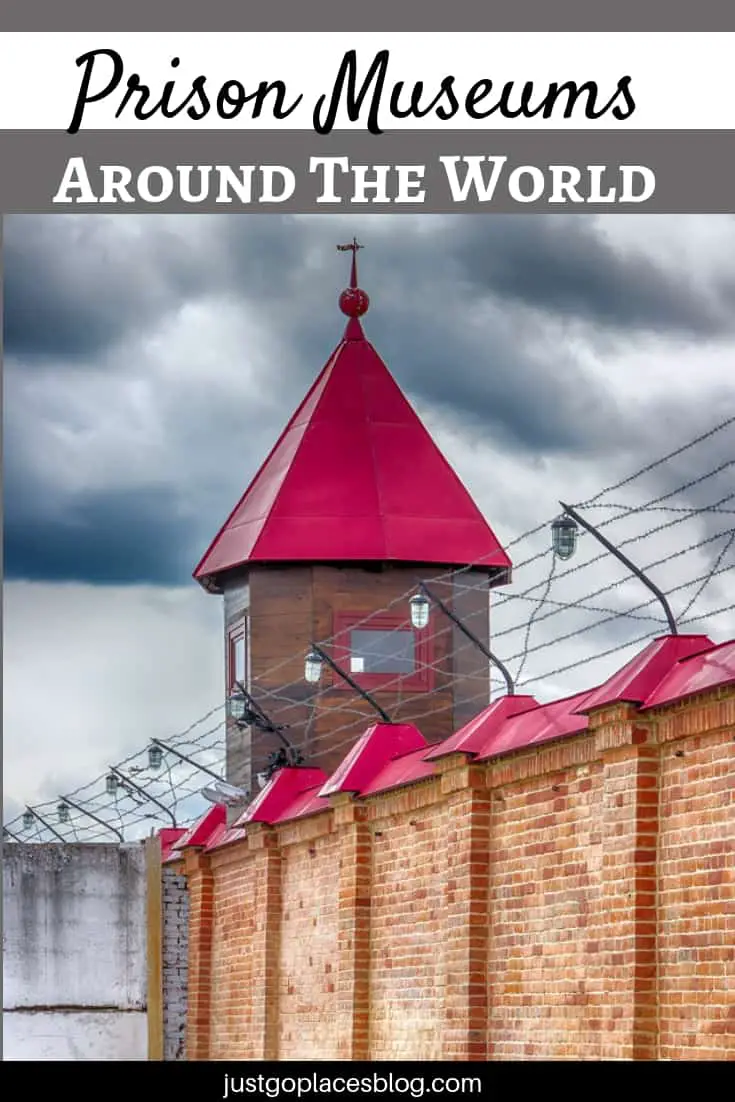
45 fantastically creepy prison museums around the world #darkhistory #history #slavetrade #museums #prisons
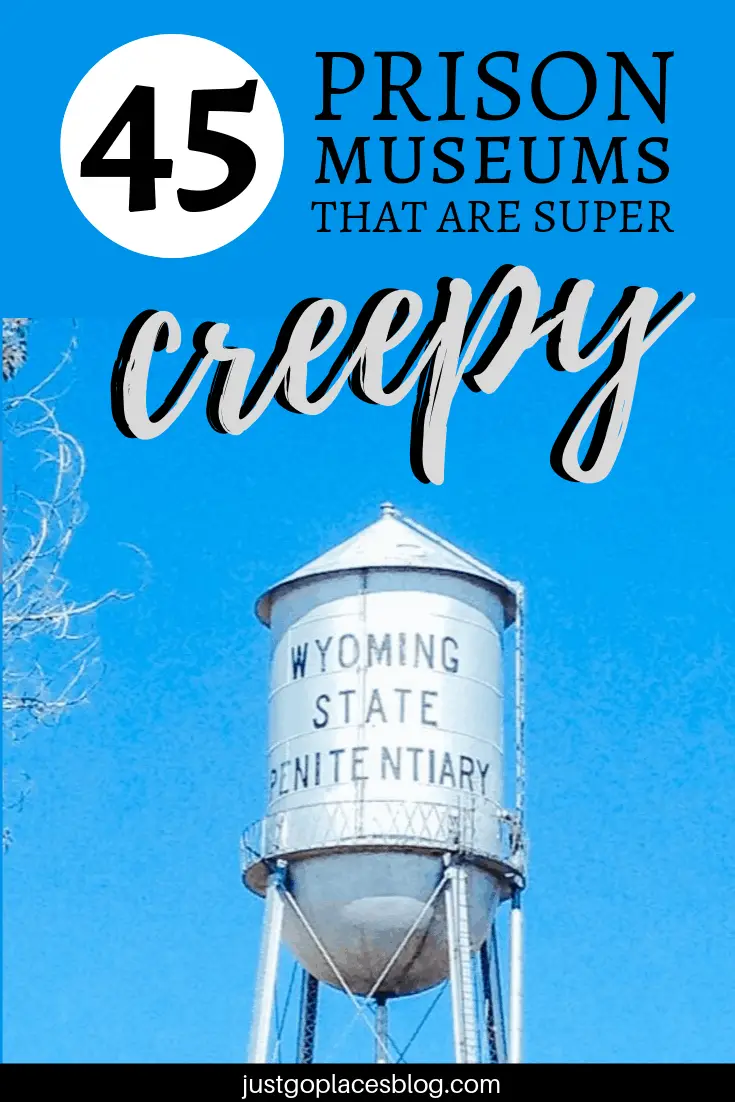
Why would you visit a prison museum? Wel, they are spooky, plus you can learn a lot about
a society by taking a look at its prisons. Check out 45+ fantastically creepy prison museums
around the world that will take you aback. The stories will give you the creeps…
#prisonmuseum #prisons #creepy
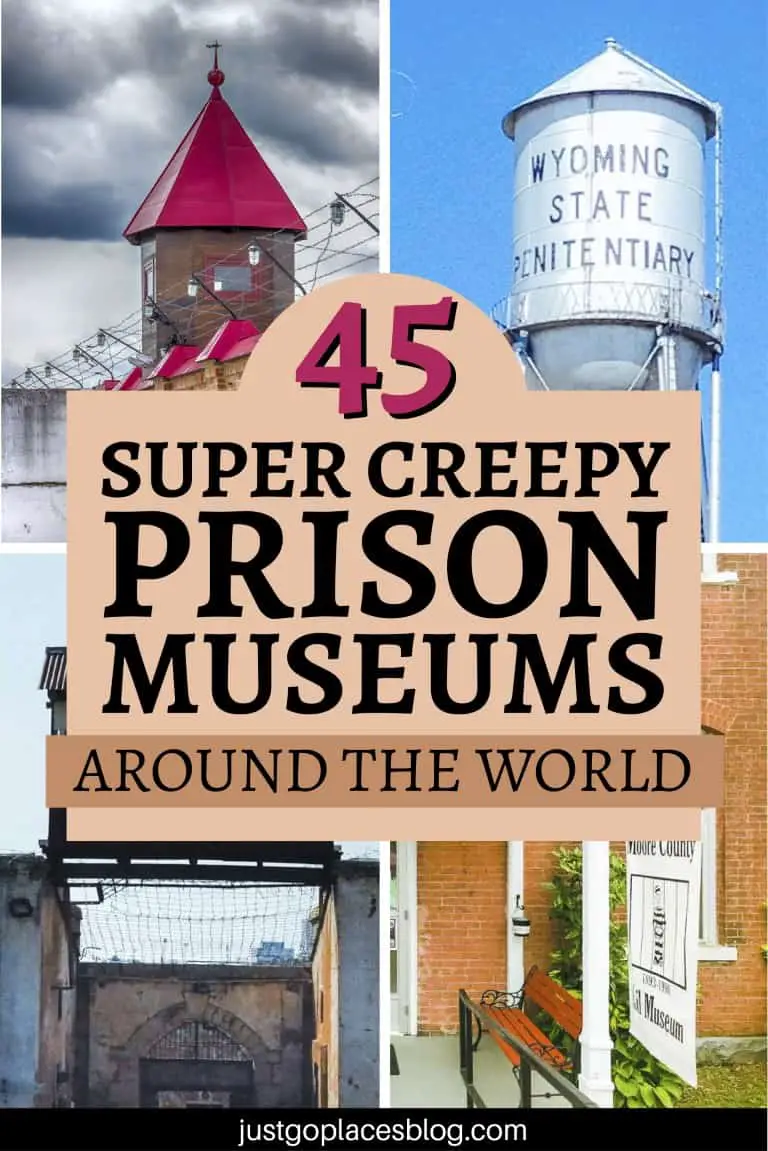
Do you know that there are quite a few prison museums in the world? They can tell you a lot about the history and culture of a place. Check out 45+ prison museums around the world that are seriously creepy. #prisonmuseum #prisons #creepy #history #wanderlust #offthebeatenpath #vacations #darkhistory #bucketlist
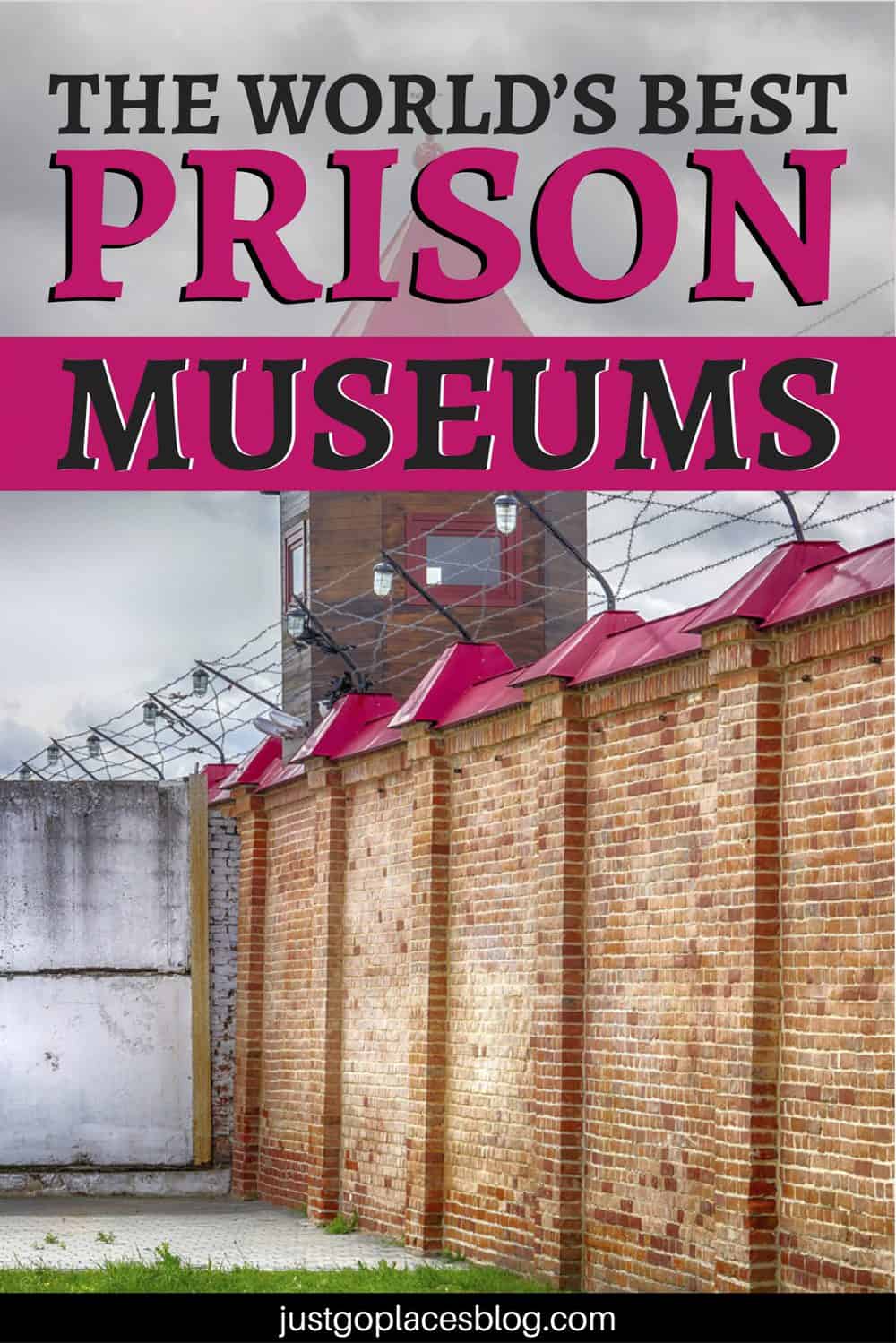
If you love visiting prison museums, here it’s the ultimate list for you. Here are 45+ prison museums around the world that are seriously creepy. Travel Destinations | Travel with Kids | Bucket List | Europe| off the beaten path | Wanderlust | Things to Do and See | Culture | #travel #vacation #familytravel #bucketlist #wanderlust #Asia #southasia #travelwithkids #prisonmuseum #prisons
#creepy #darkhistory #Europe #USA #America #UnitedStates #Australia #Africa #Alcatraz #offthebeatenpath
We did not receive compensation of any form, monetary or otherwise, from any of the products, services, hotels etc mentioned in this article.
This site generates income via partnerships with carefully-curated travel and lifestyle brands and/or purchases made through links to them at no extra cost to you. More information may be found on our Disclosure Policy.

